This document provides an overview of operators, selection statements, and looping statements in Java. It begins with a breakdown of the different types of operators in Java including assignment, relational, arithmetic, conditional, bitwise, and logical operators. It then covers selection statements such as if-else statements and switch statements. Finally, it discusses looping statements including for, while, do-while loops as well as the continue and break statements. It also includes brief sections on arrays and arrays of arrays in Java.

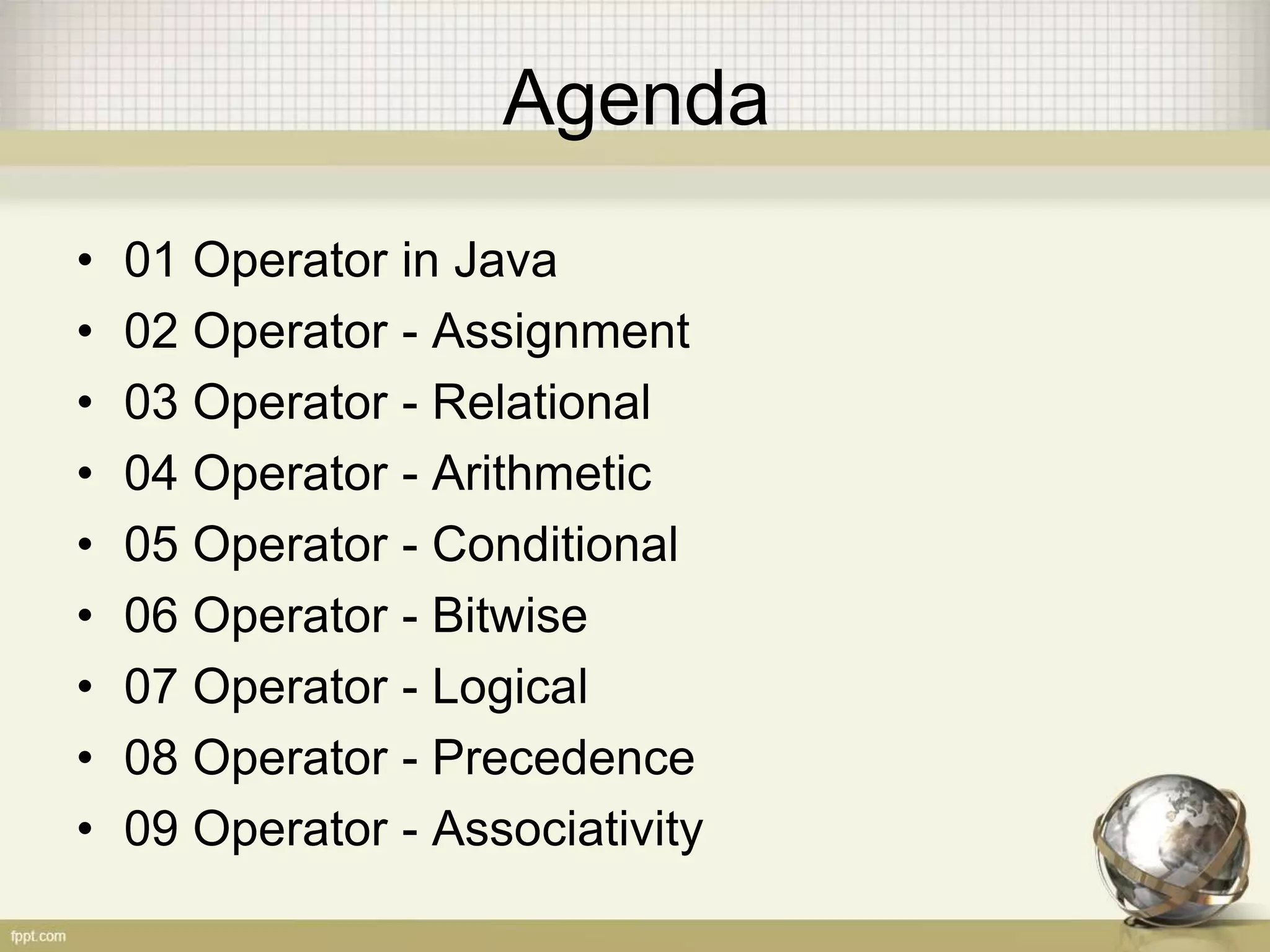
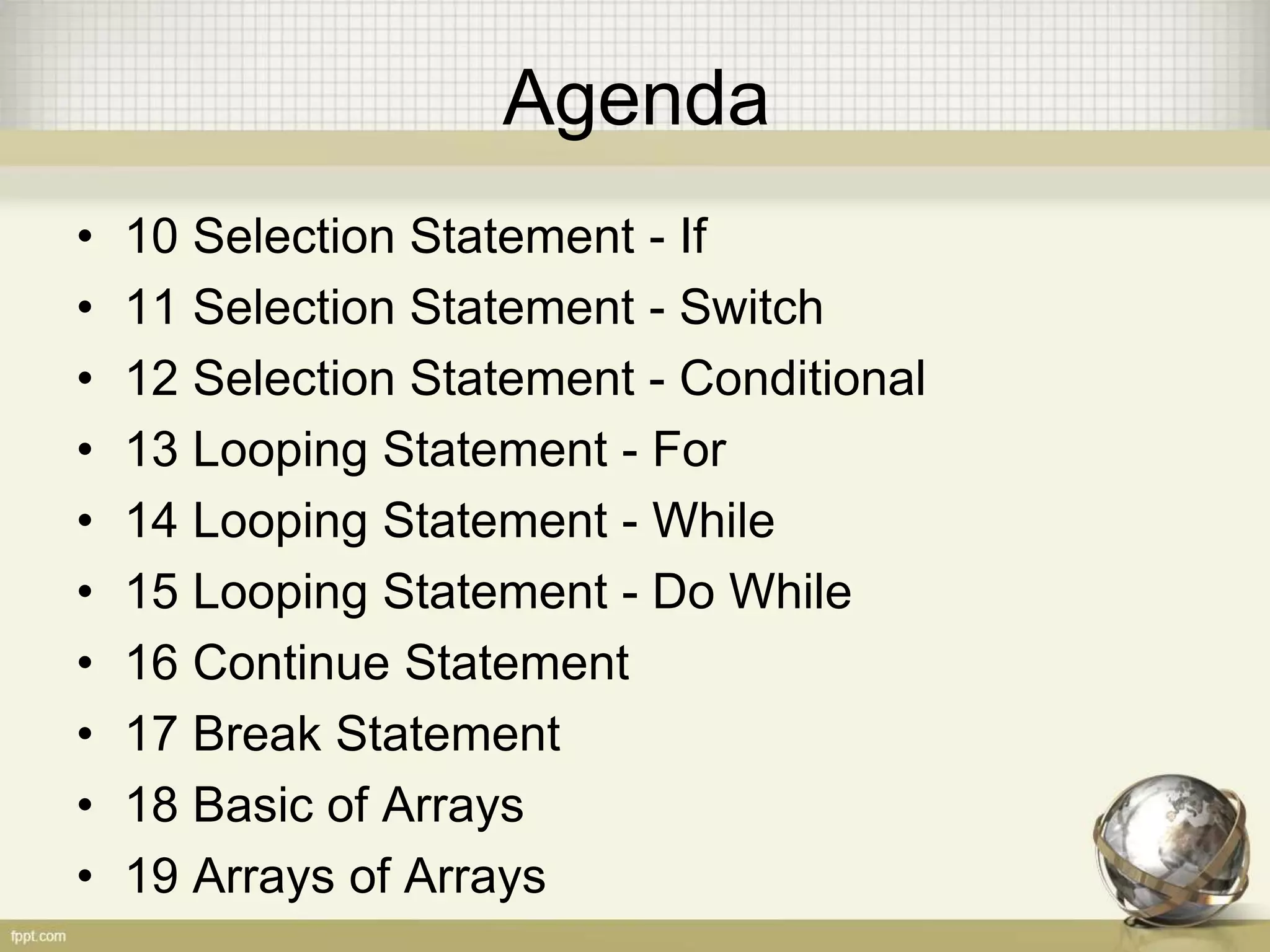
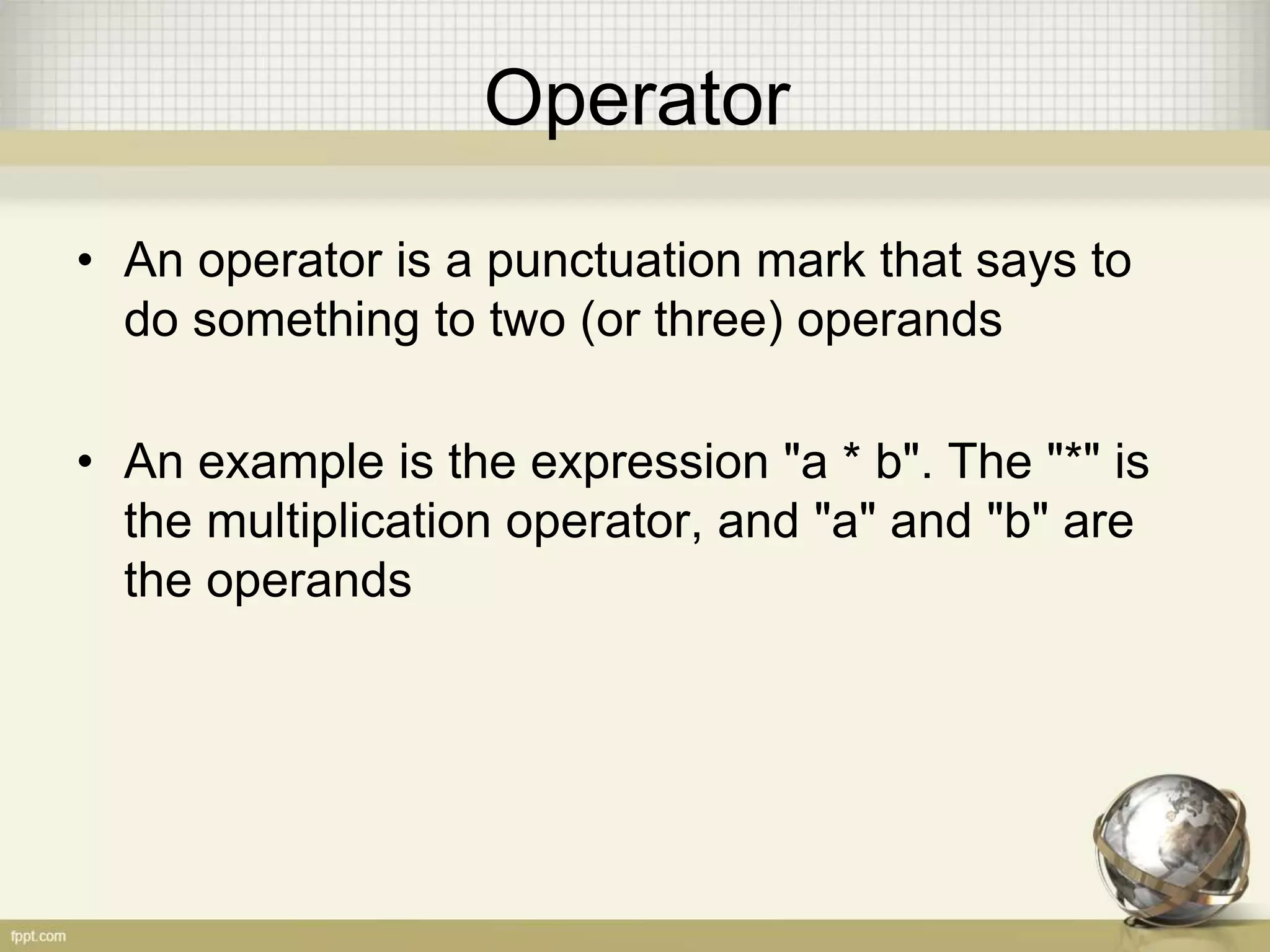
![Operator • Example: int a = 3 * 2; int b = 3 + t.calculate(); arr[2] = 5; arr[2+5] = 2 + 5;](https://image.slidesharecdn.com/02javalanguageandooppartii-140610213230-phpapp02/75/02-Java-Language-And-OOP-PART-II-5-2048.jpg)

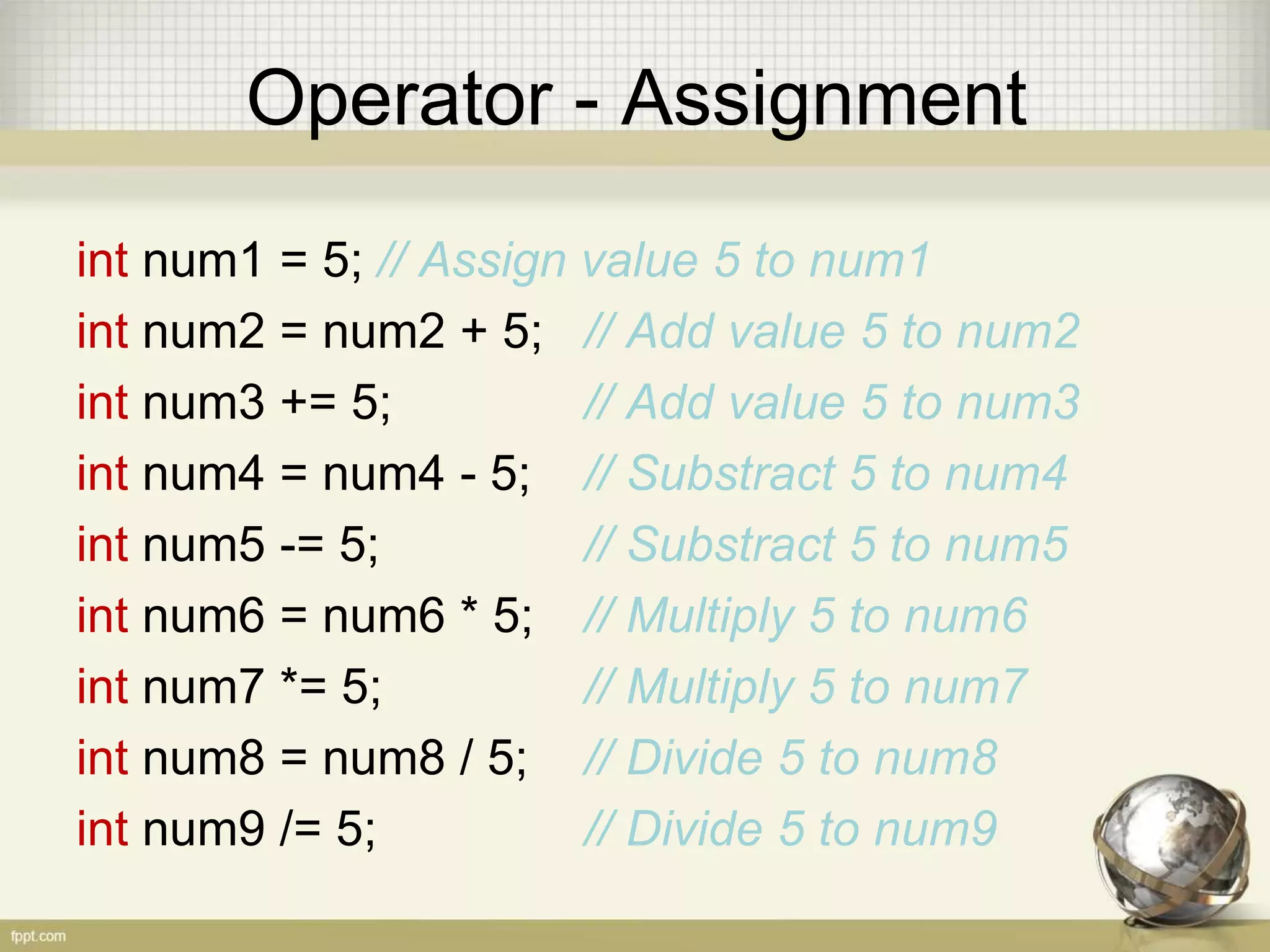
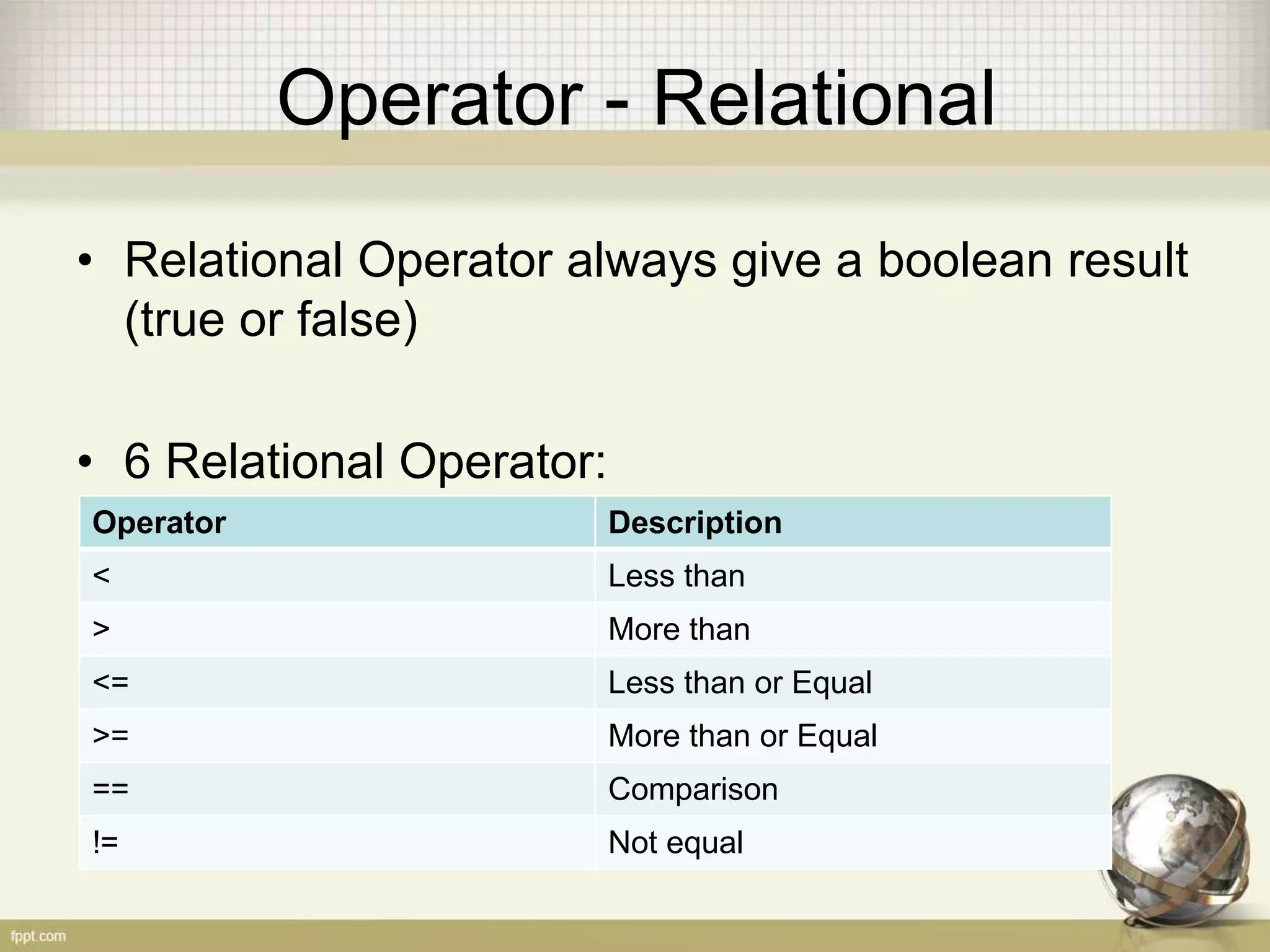
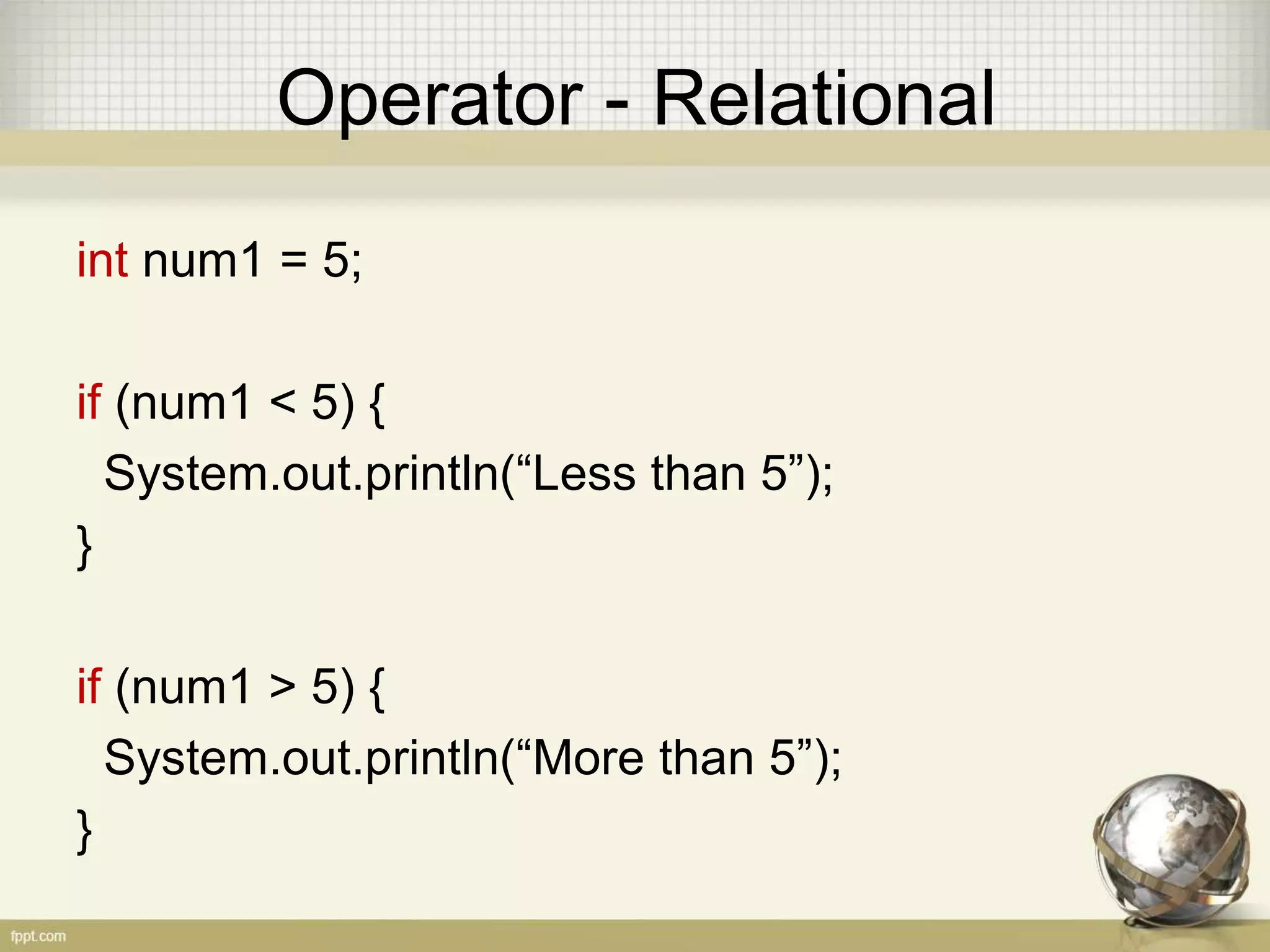




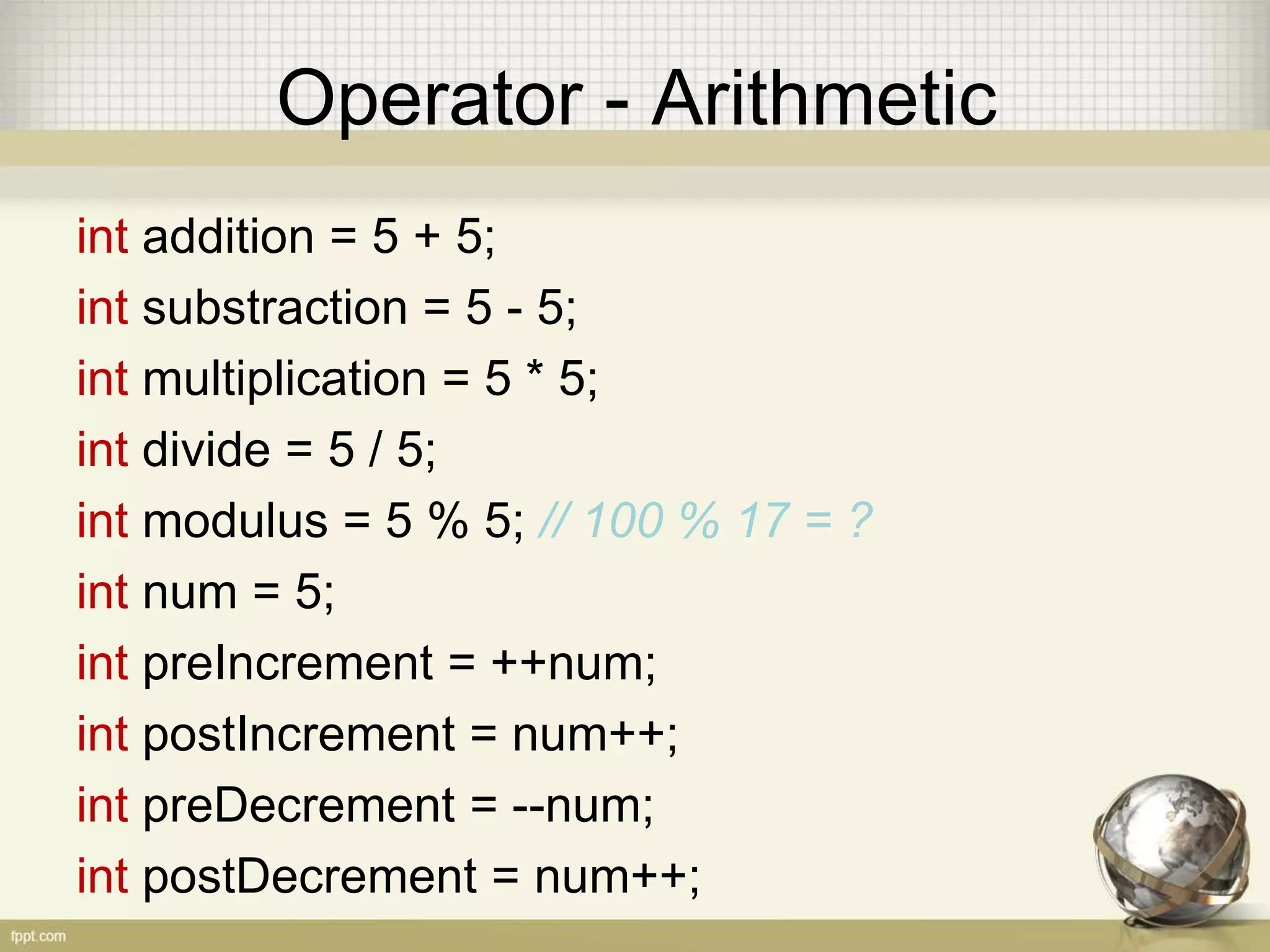
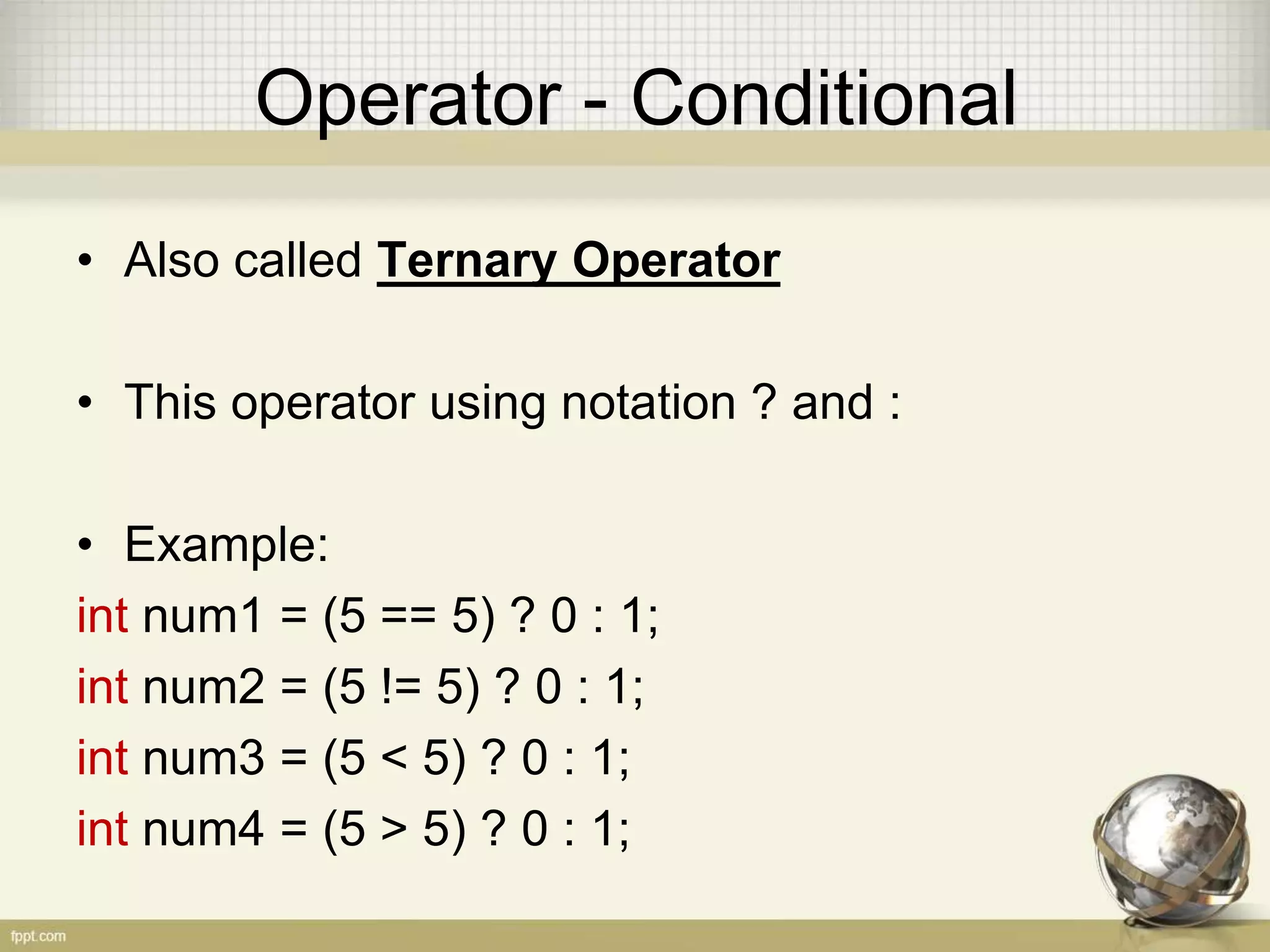
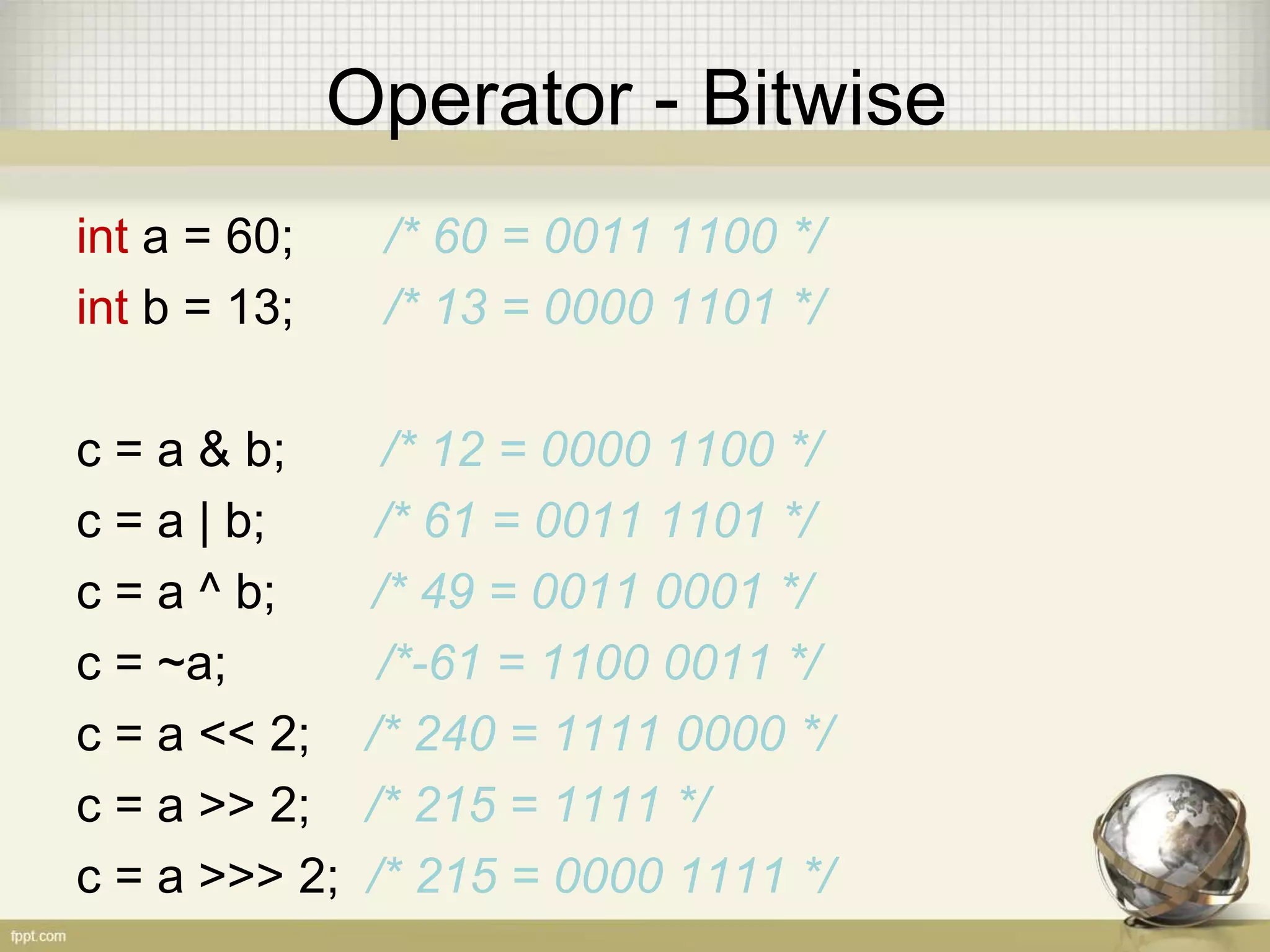
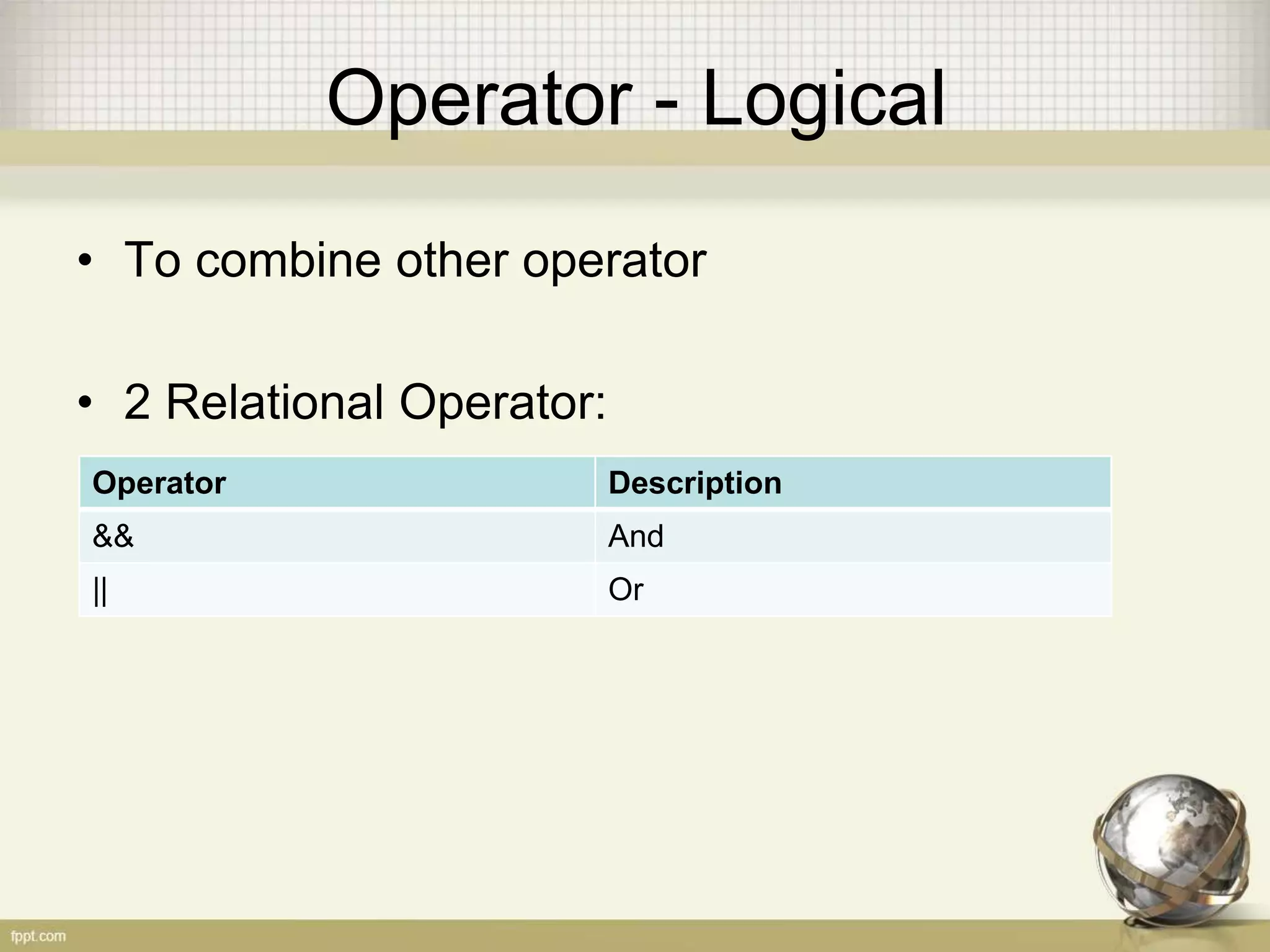
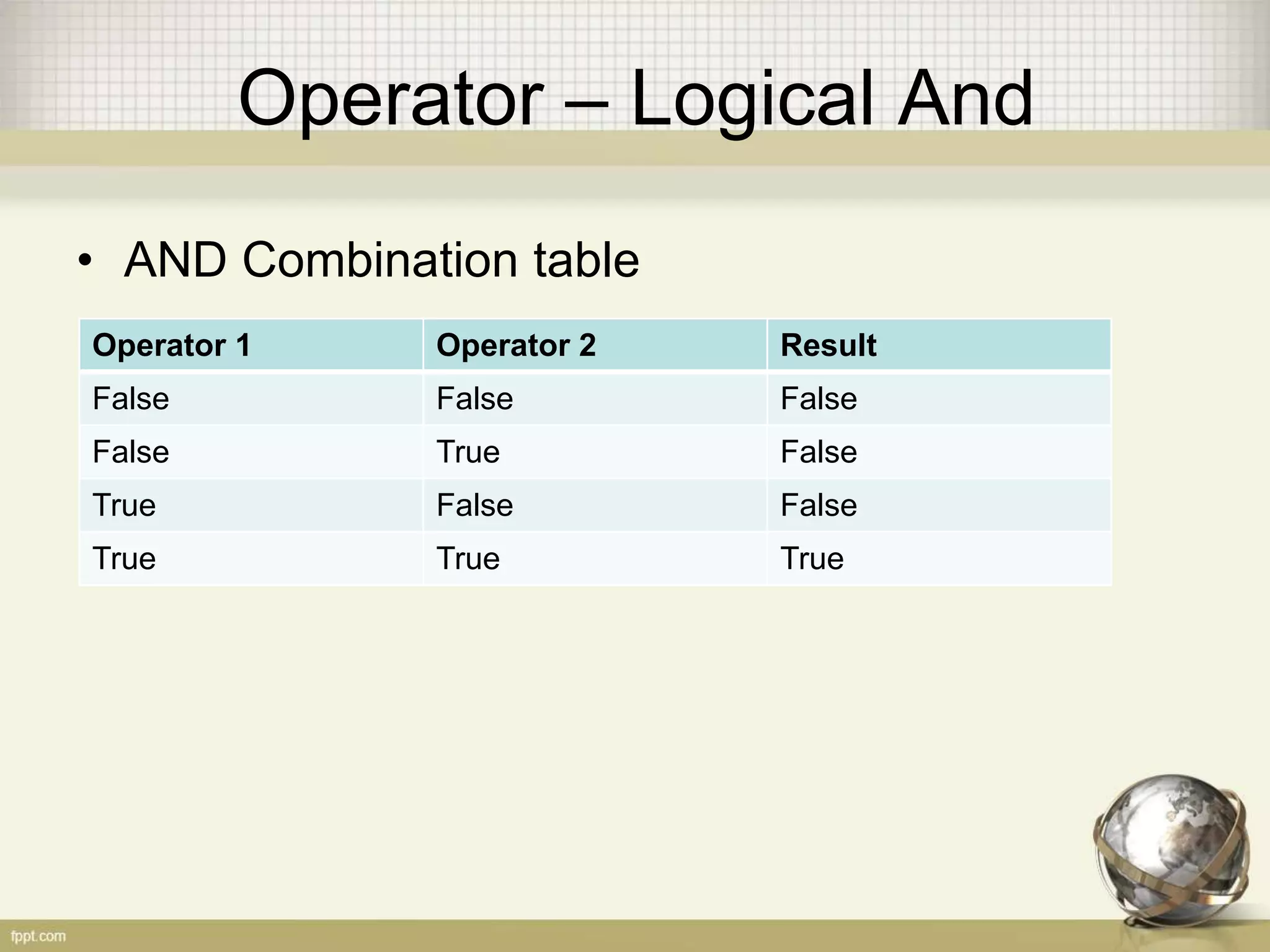



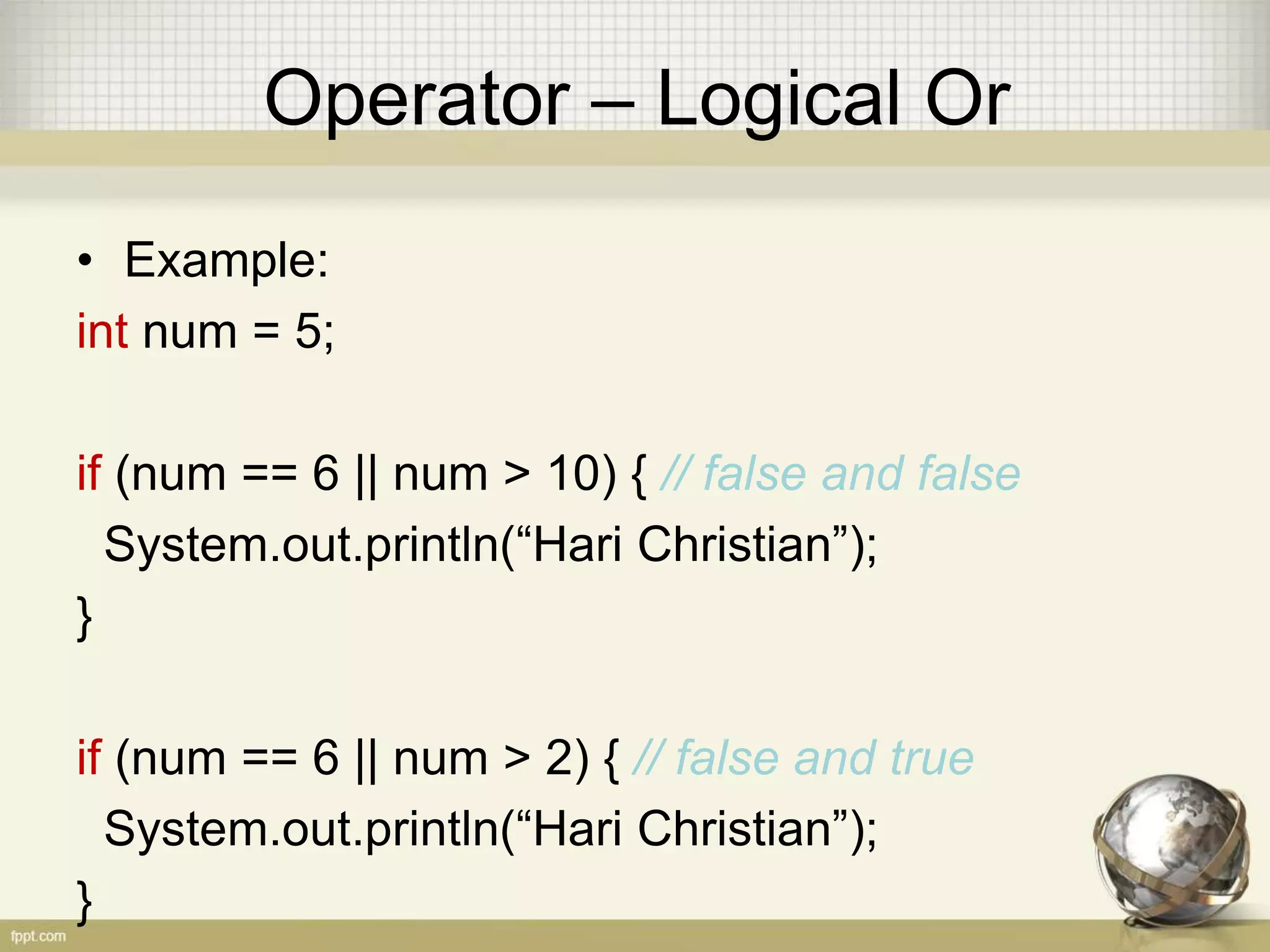


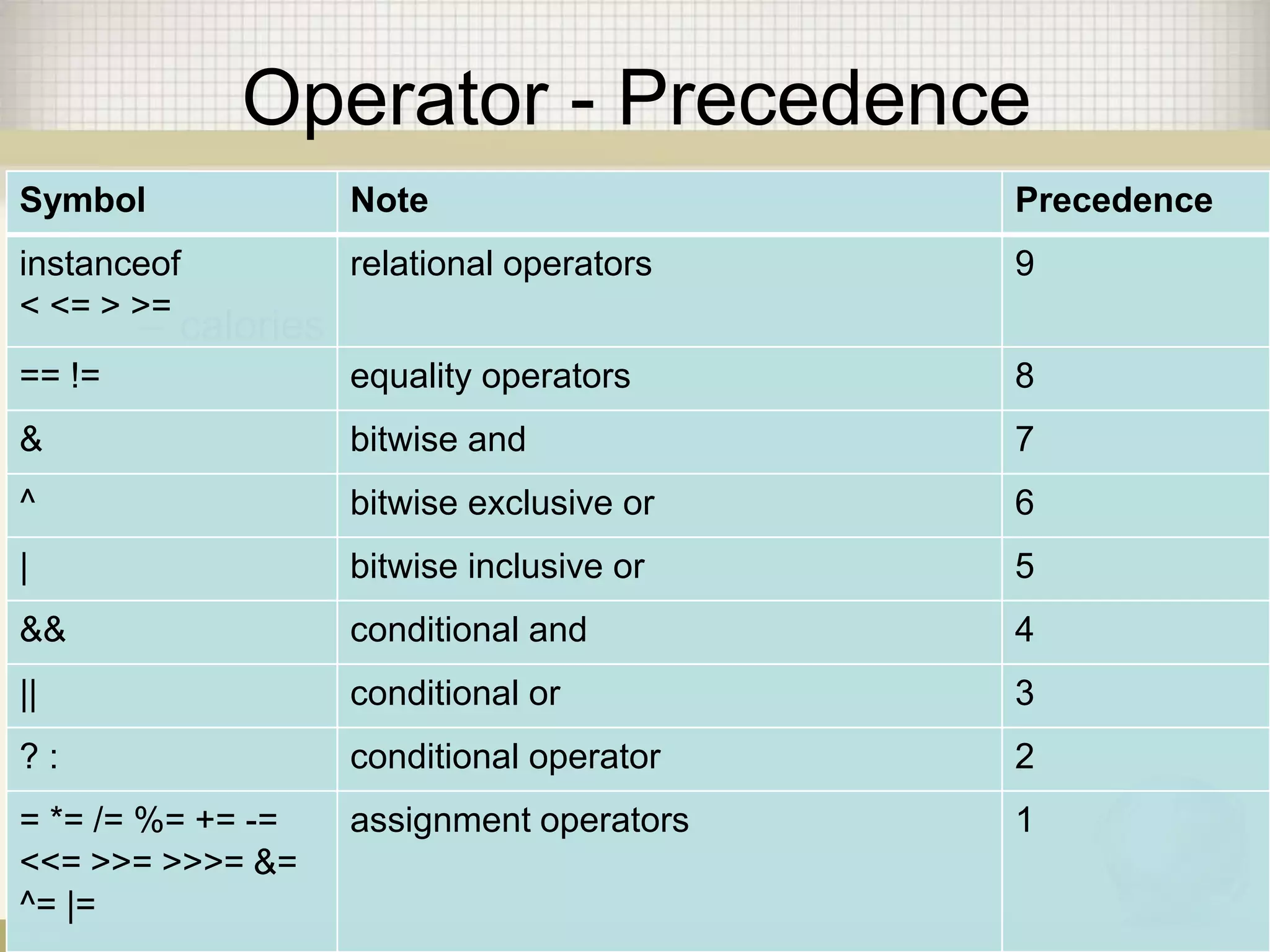
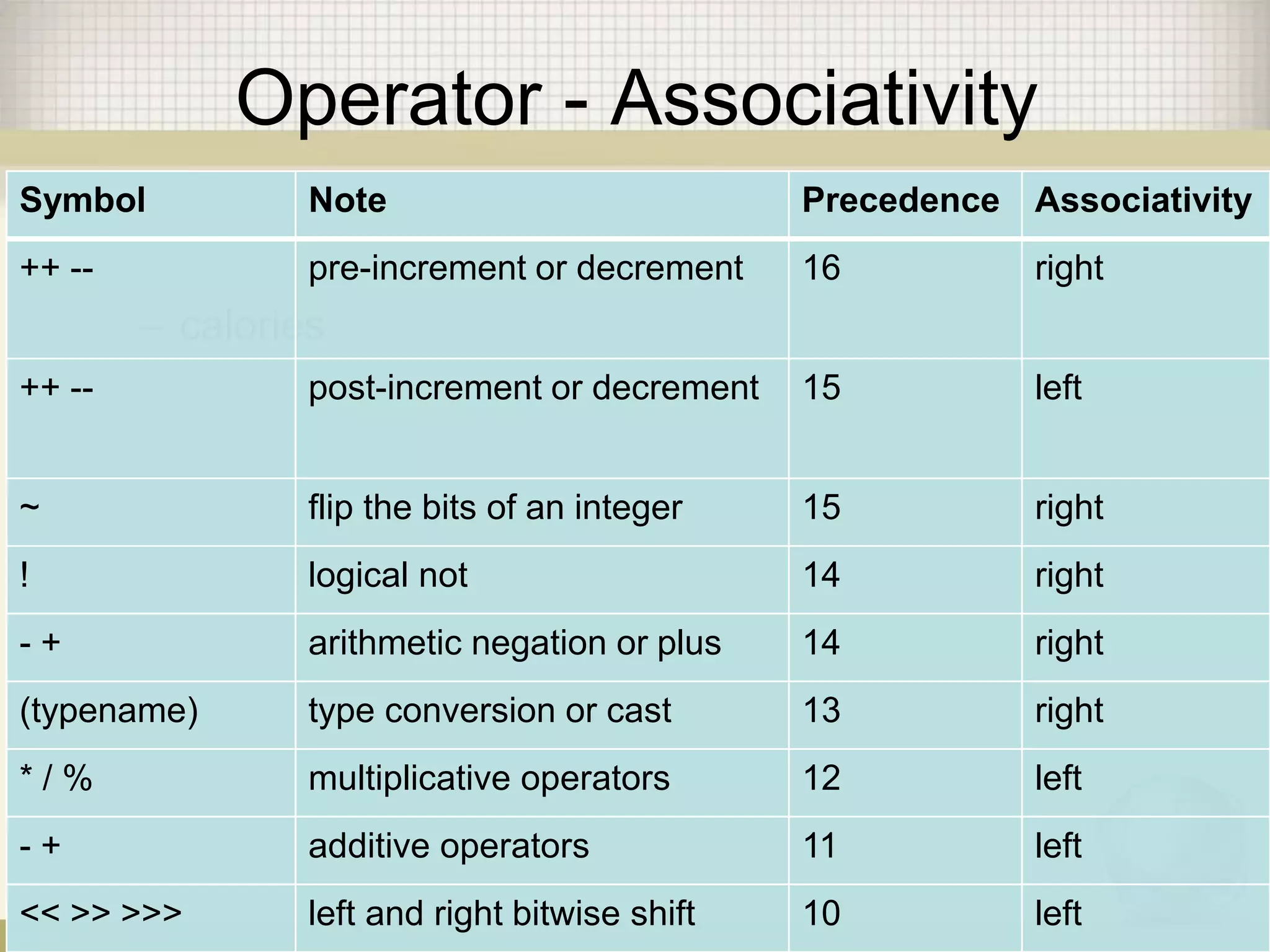
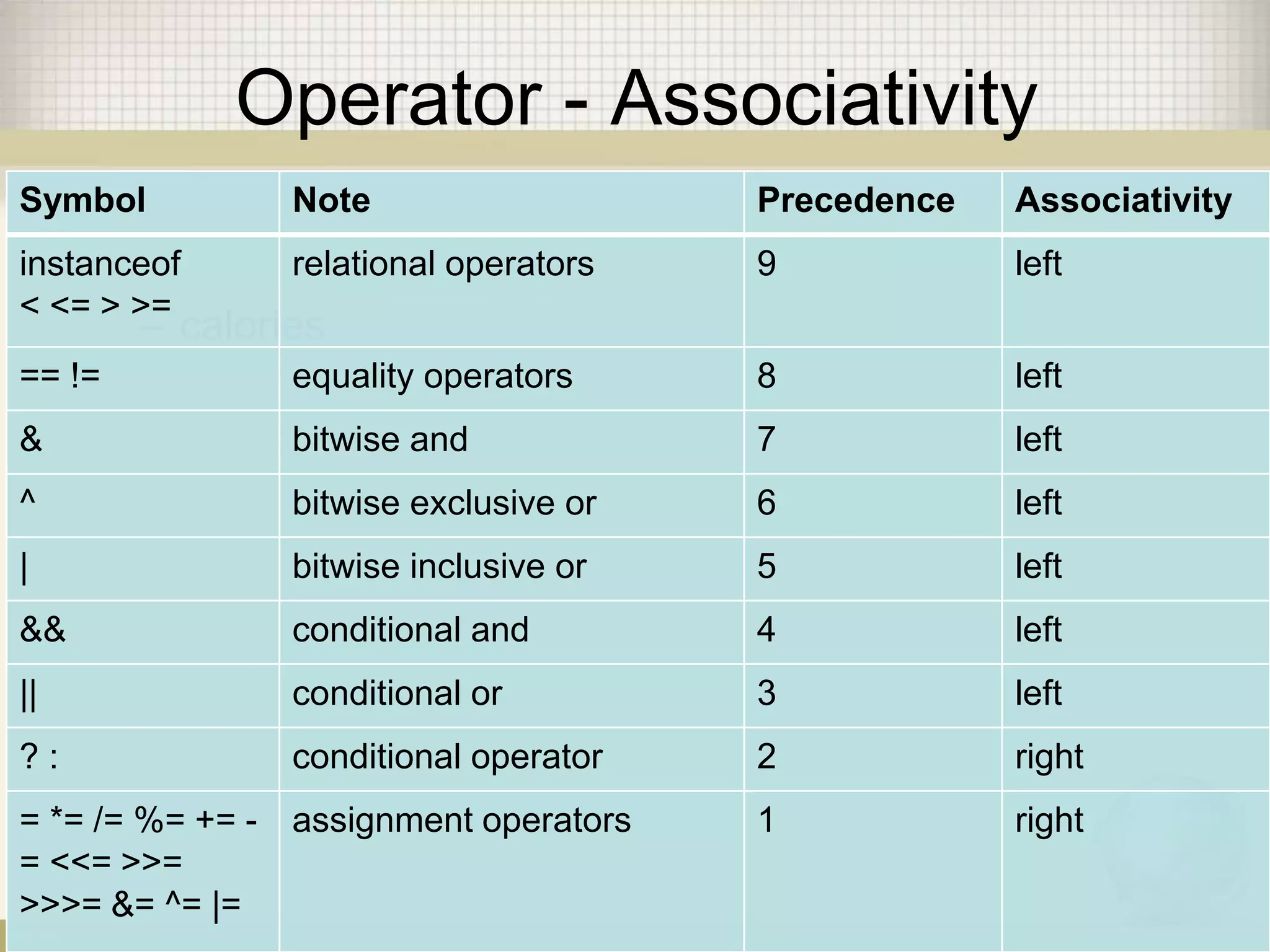
![Selection Statement - IF • Format: if ( Expression ) Statement [ else Statement ] • Explanation: Expression must have boolean type Using { } to make more than 1 statement](https://image.slidesharecdn.com/02javalanguageandooppartii-140610213230-phpapp02/75/02-Java-Language-And-OOP-PART-II-28-2048.jpg)
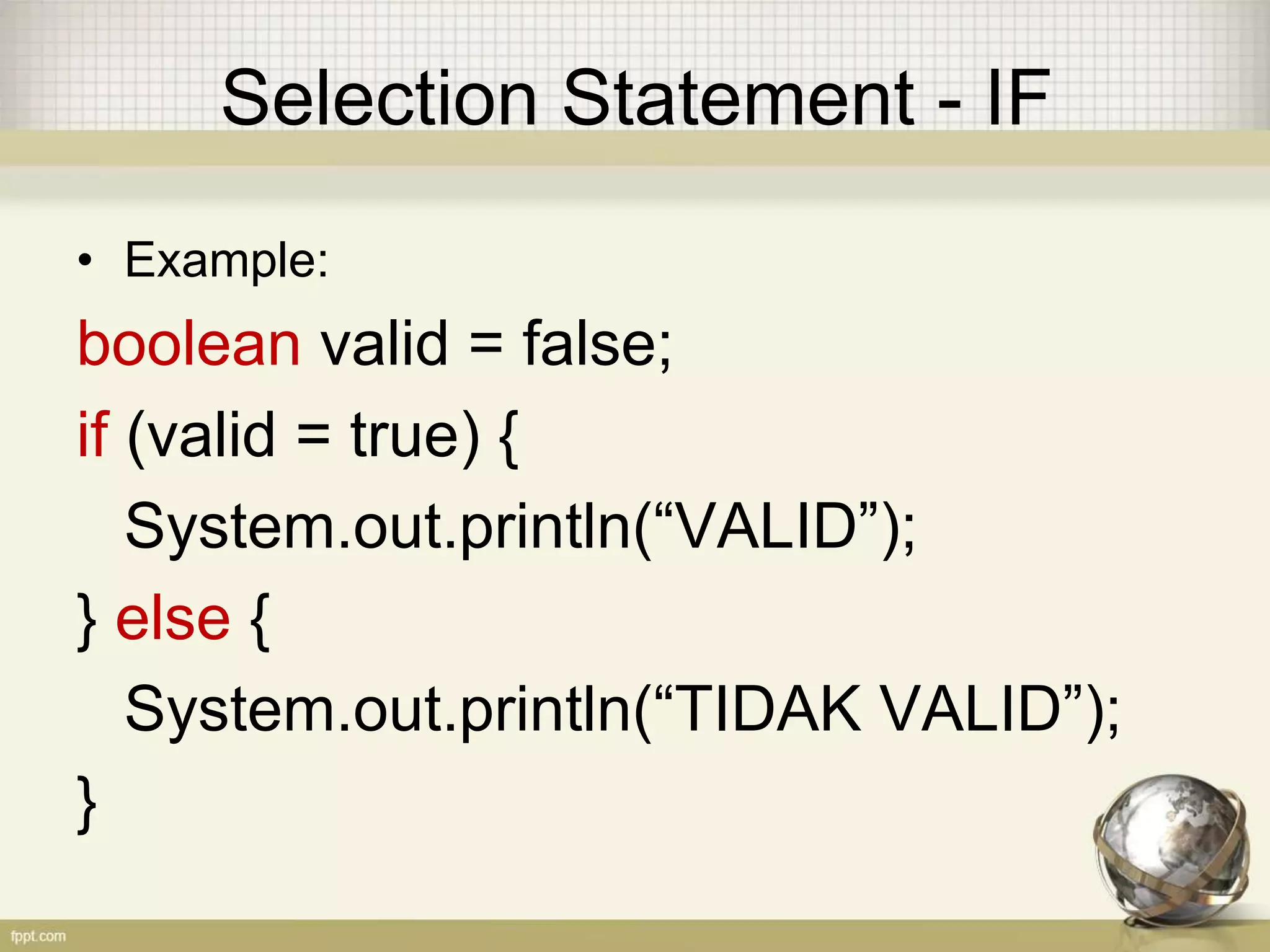
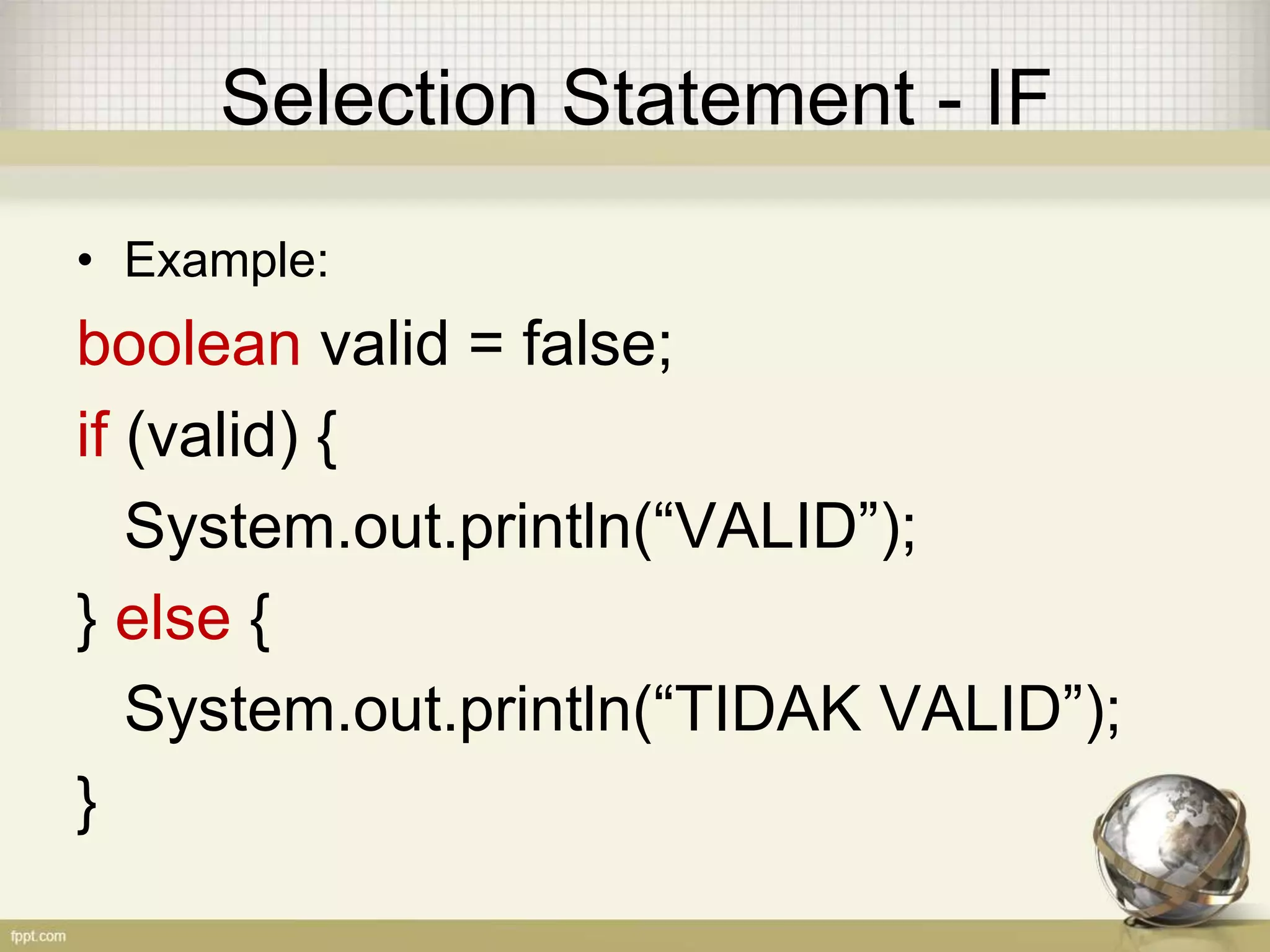



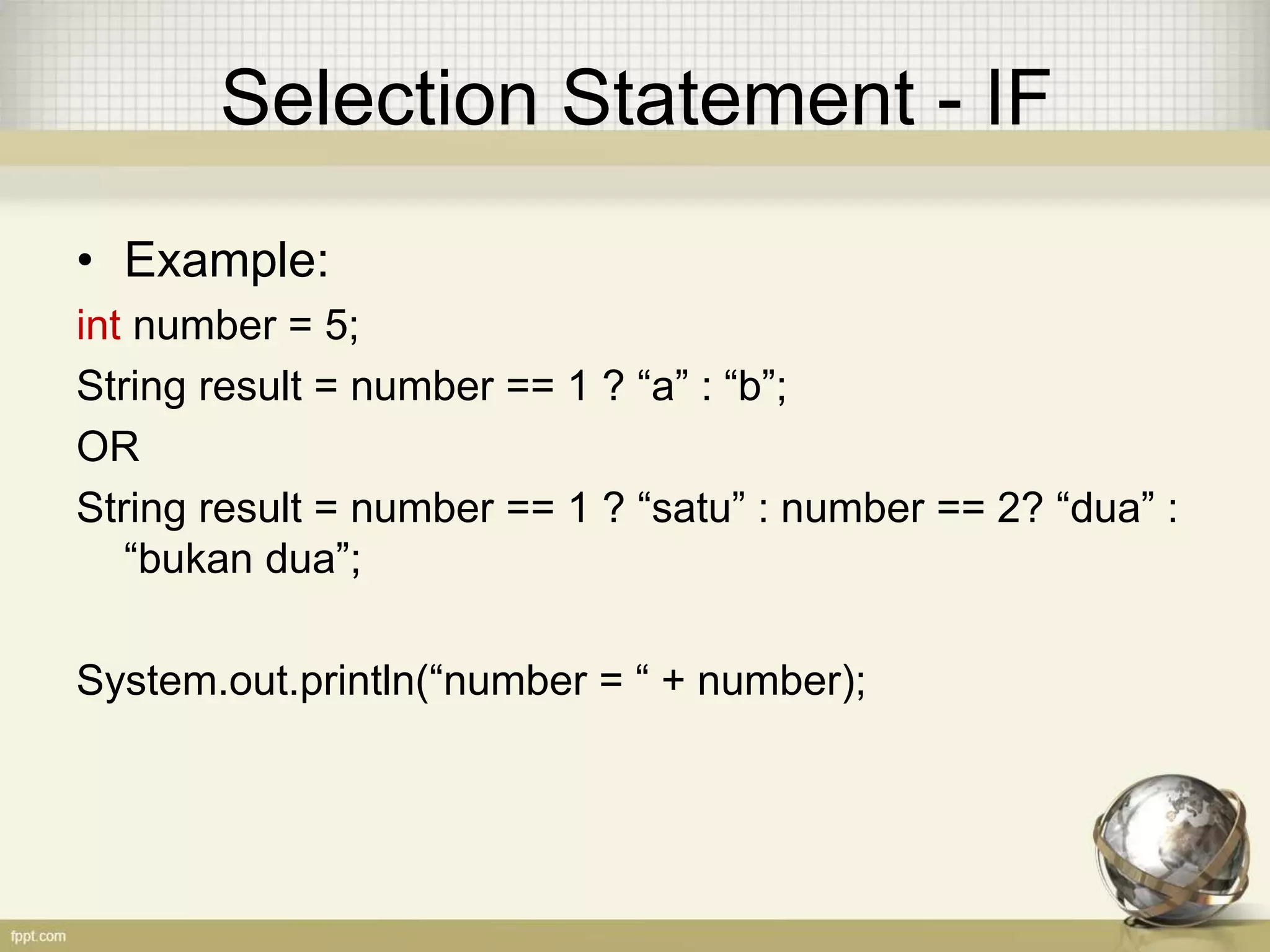




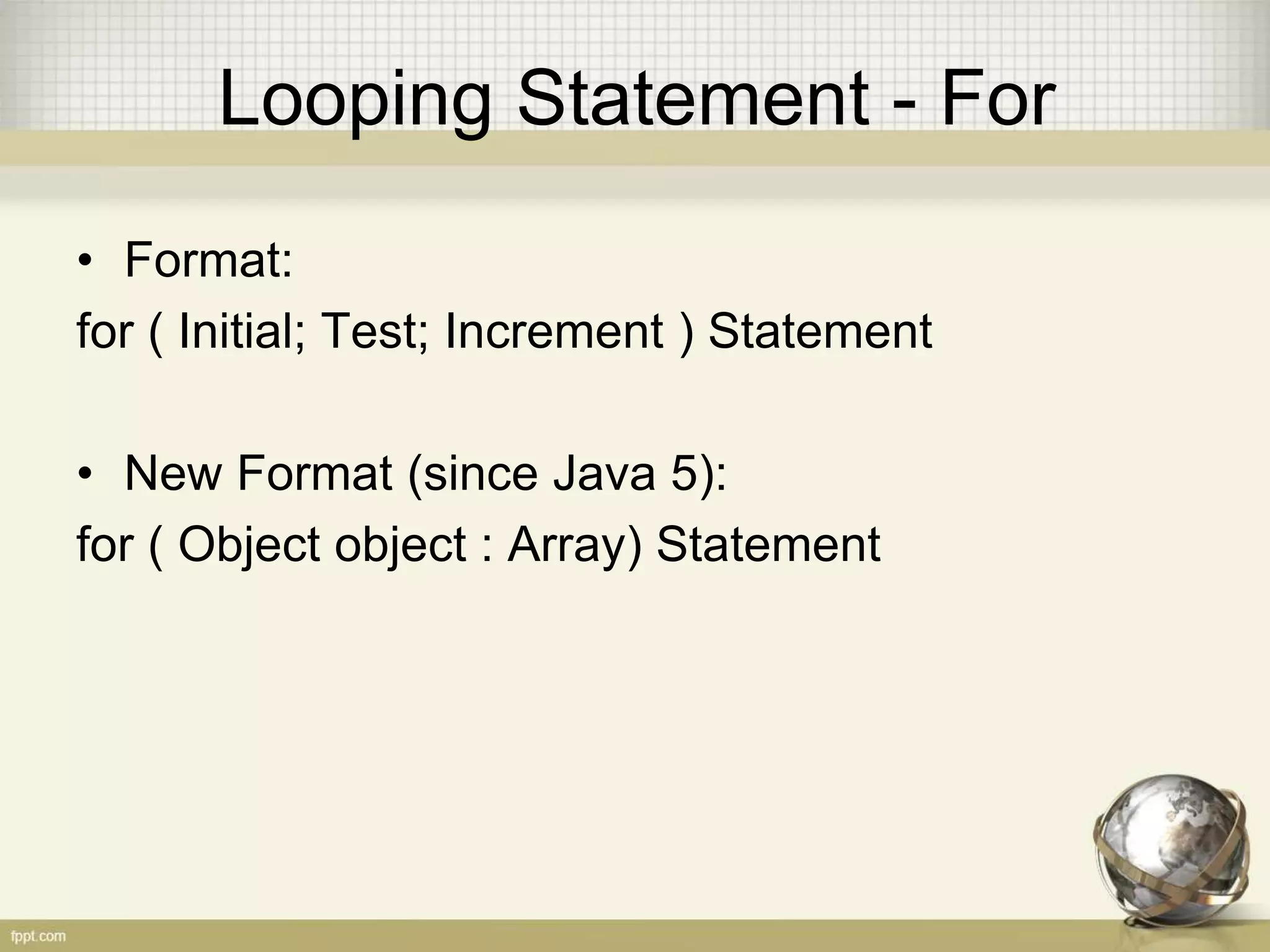
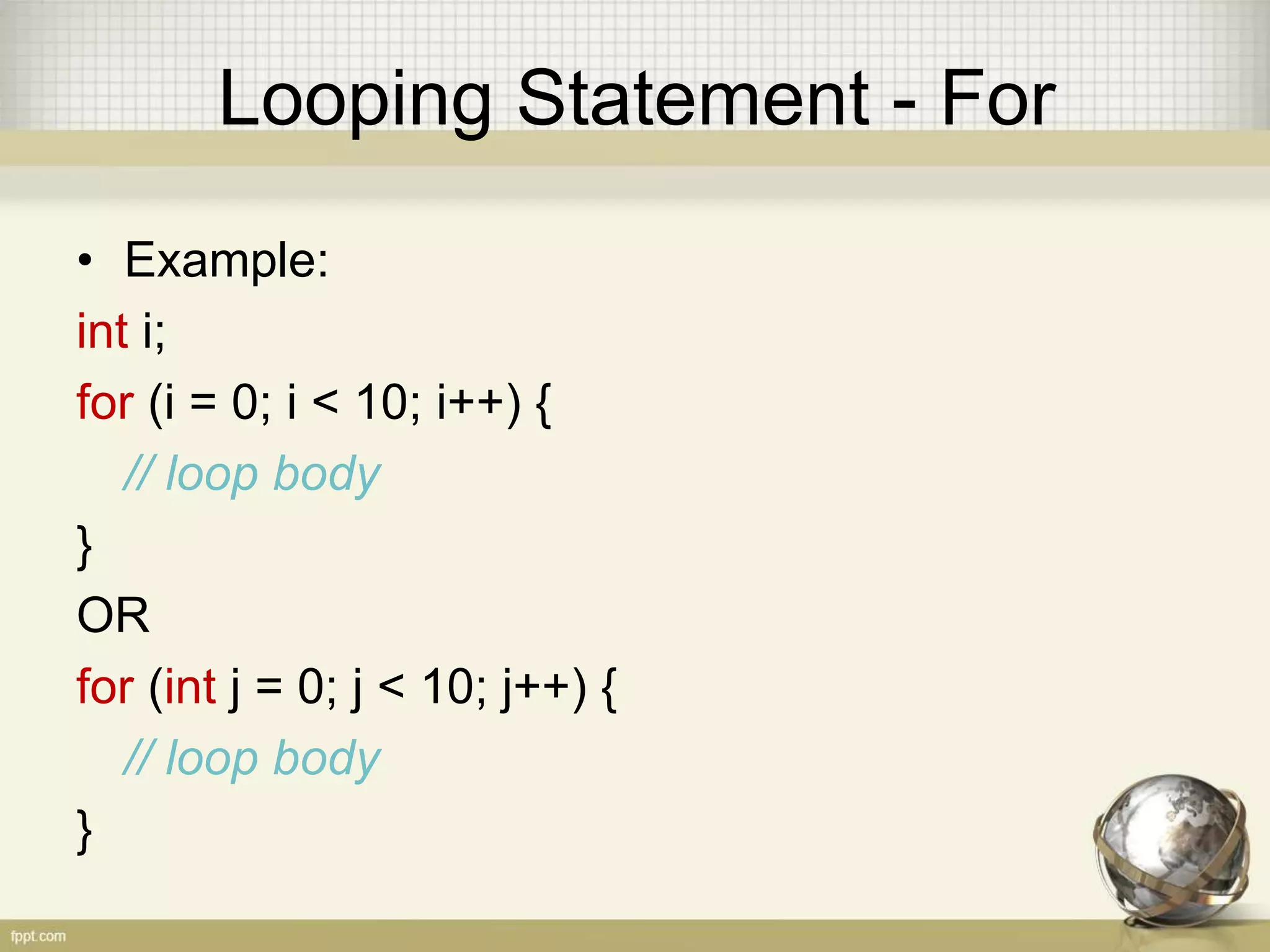


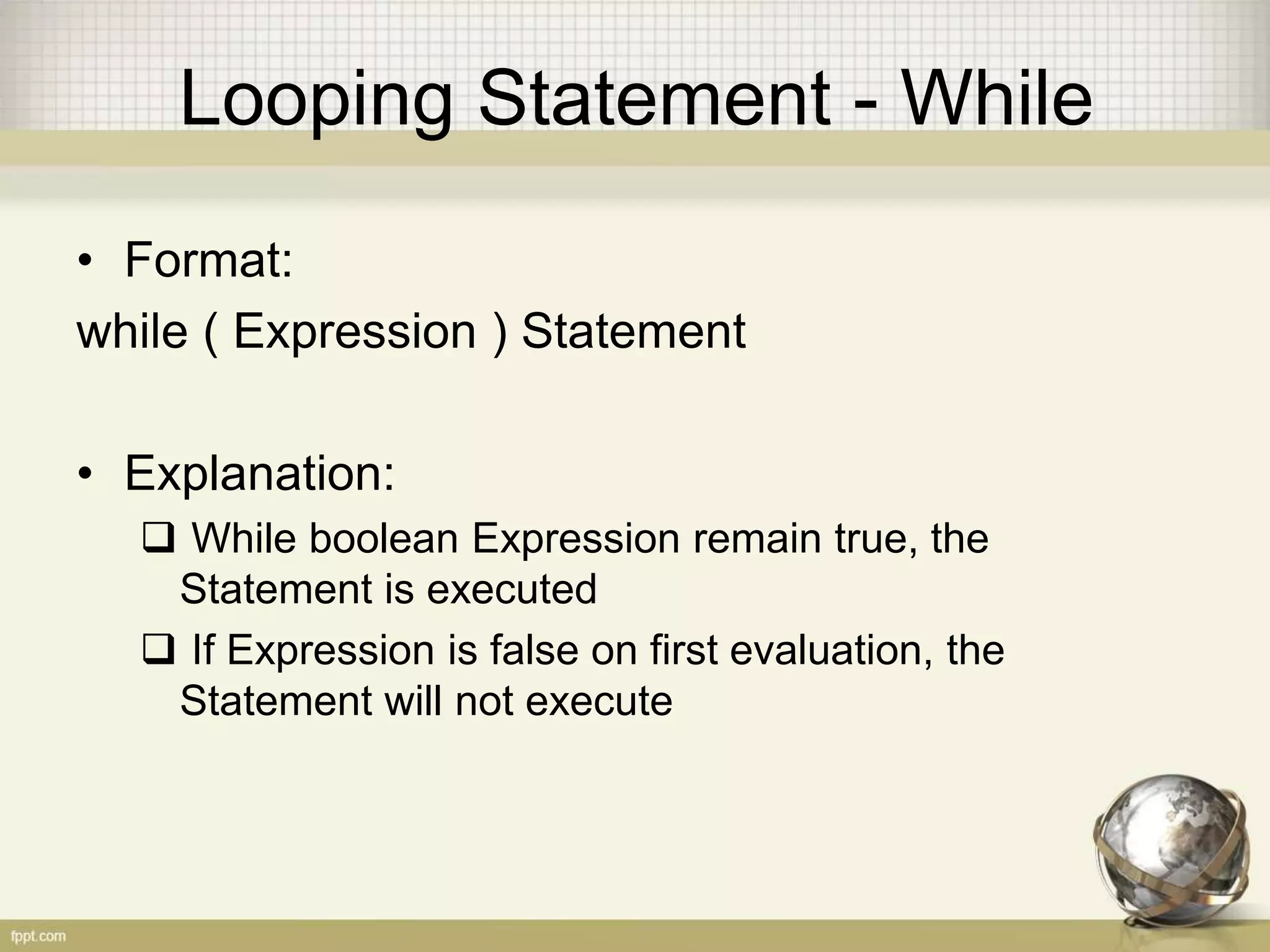
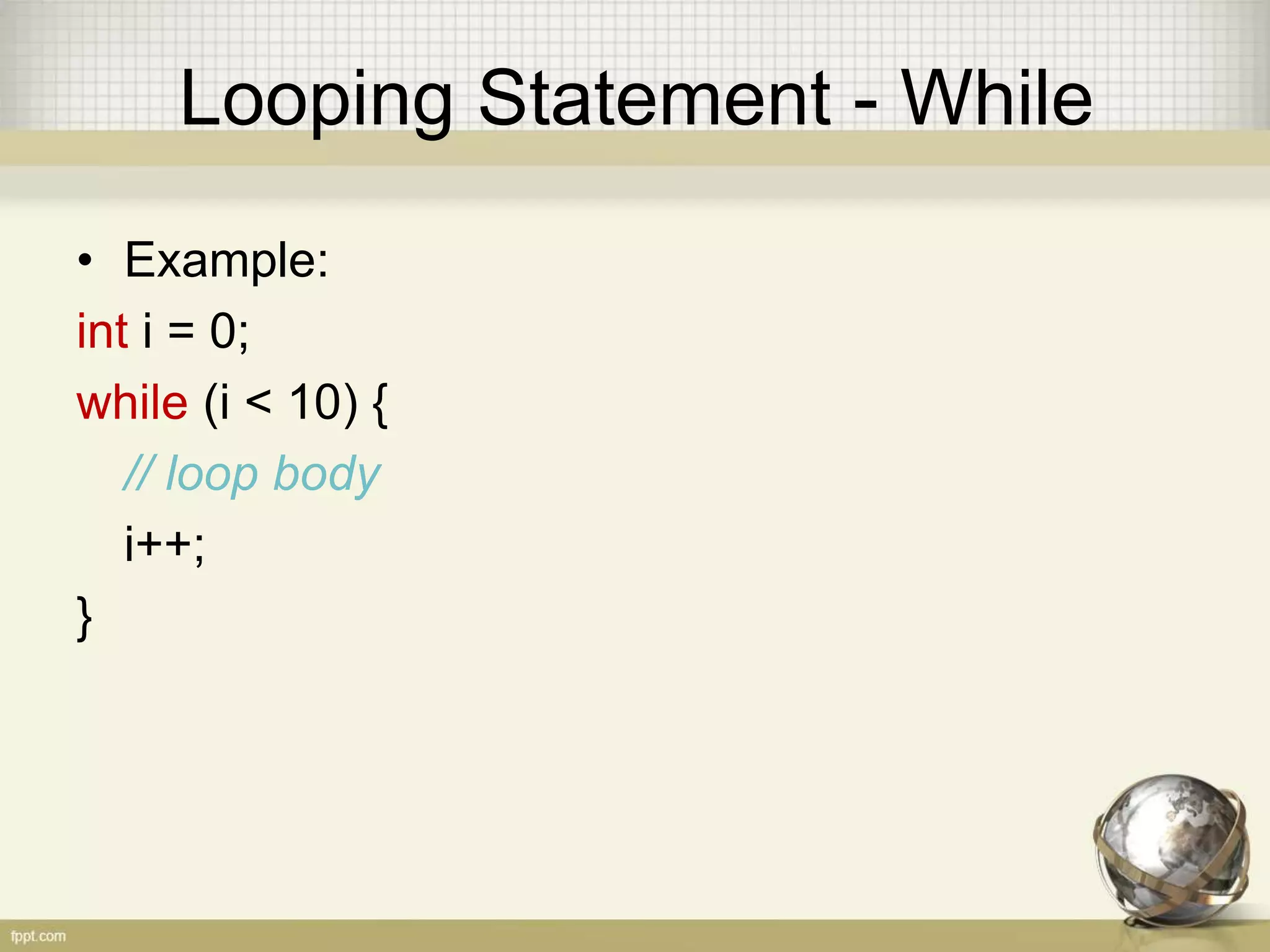
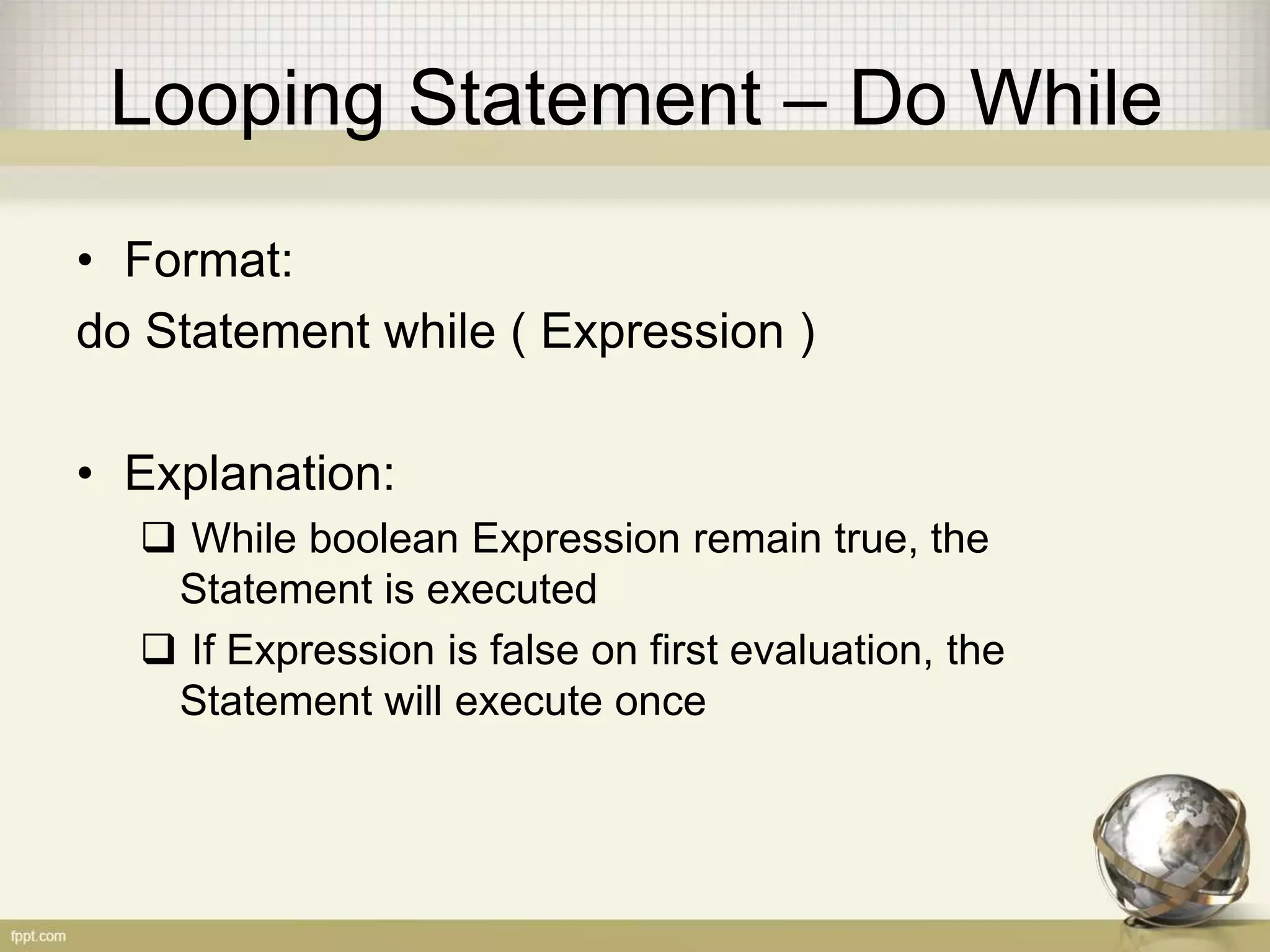



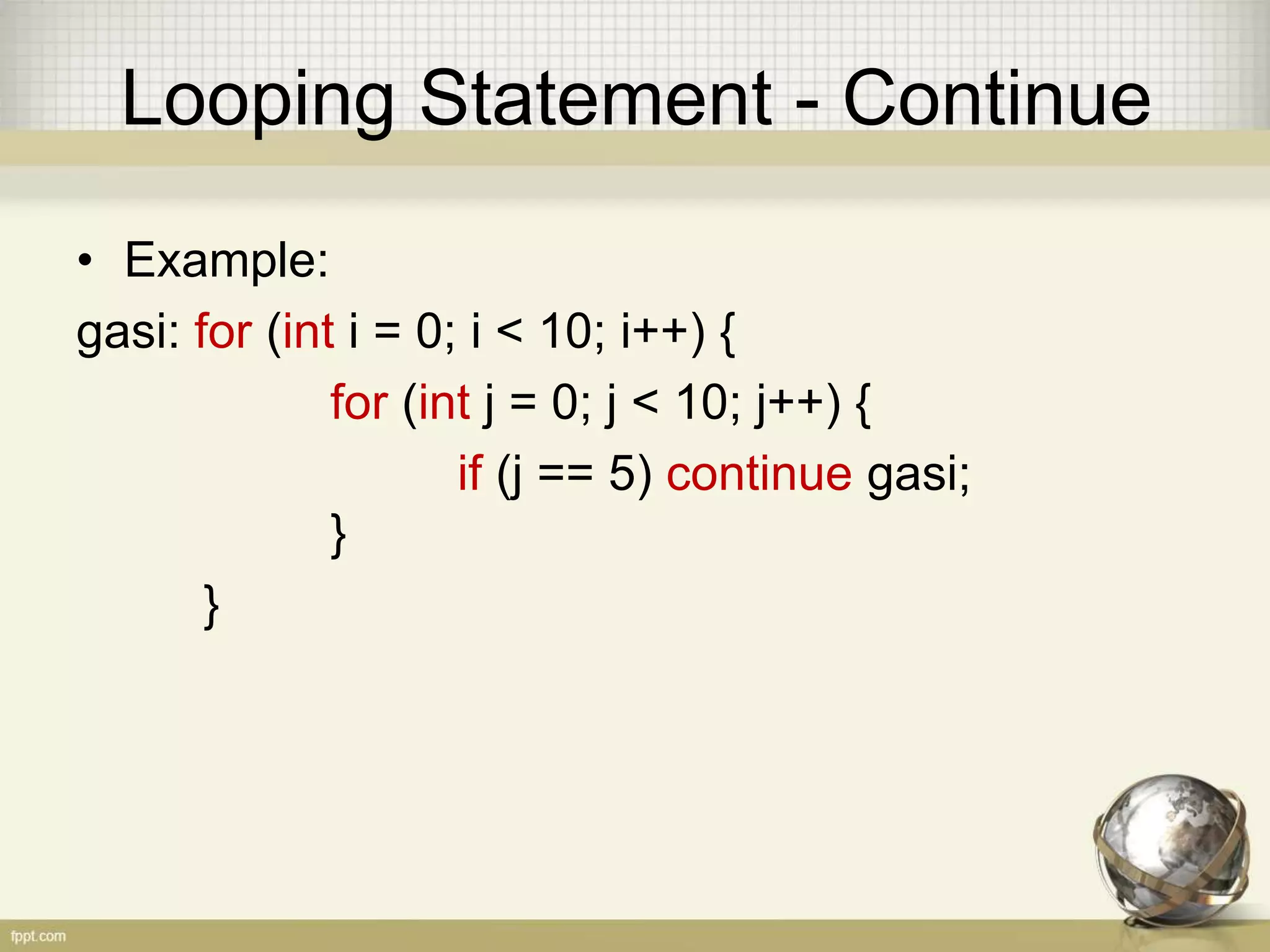
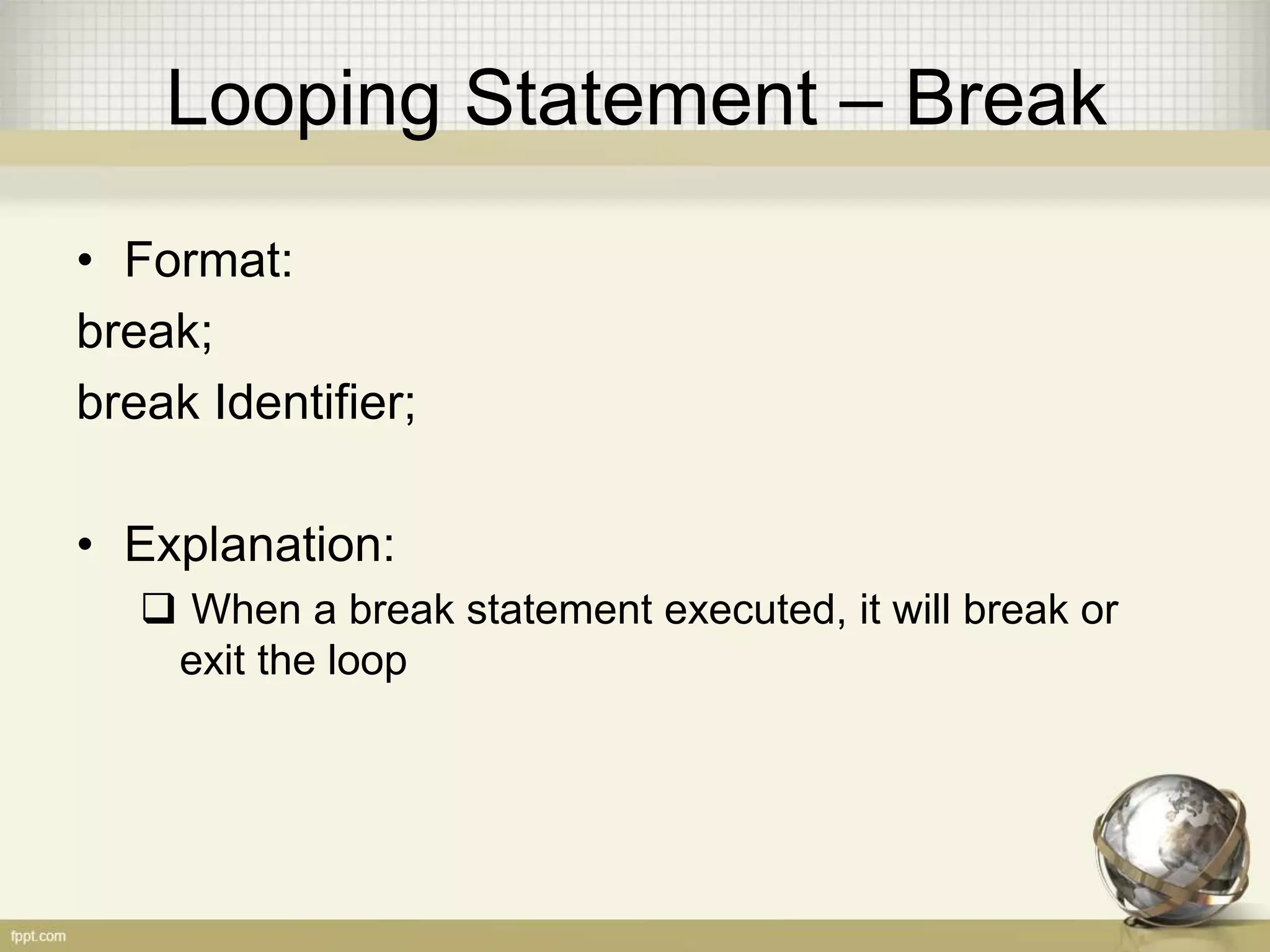

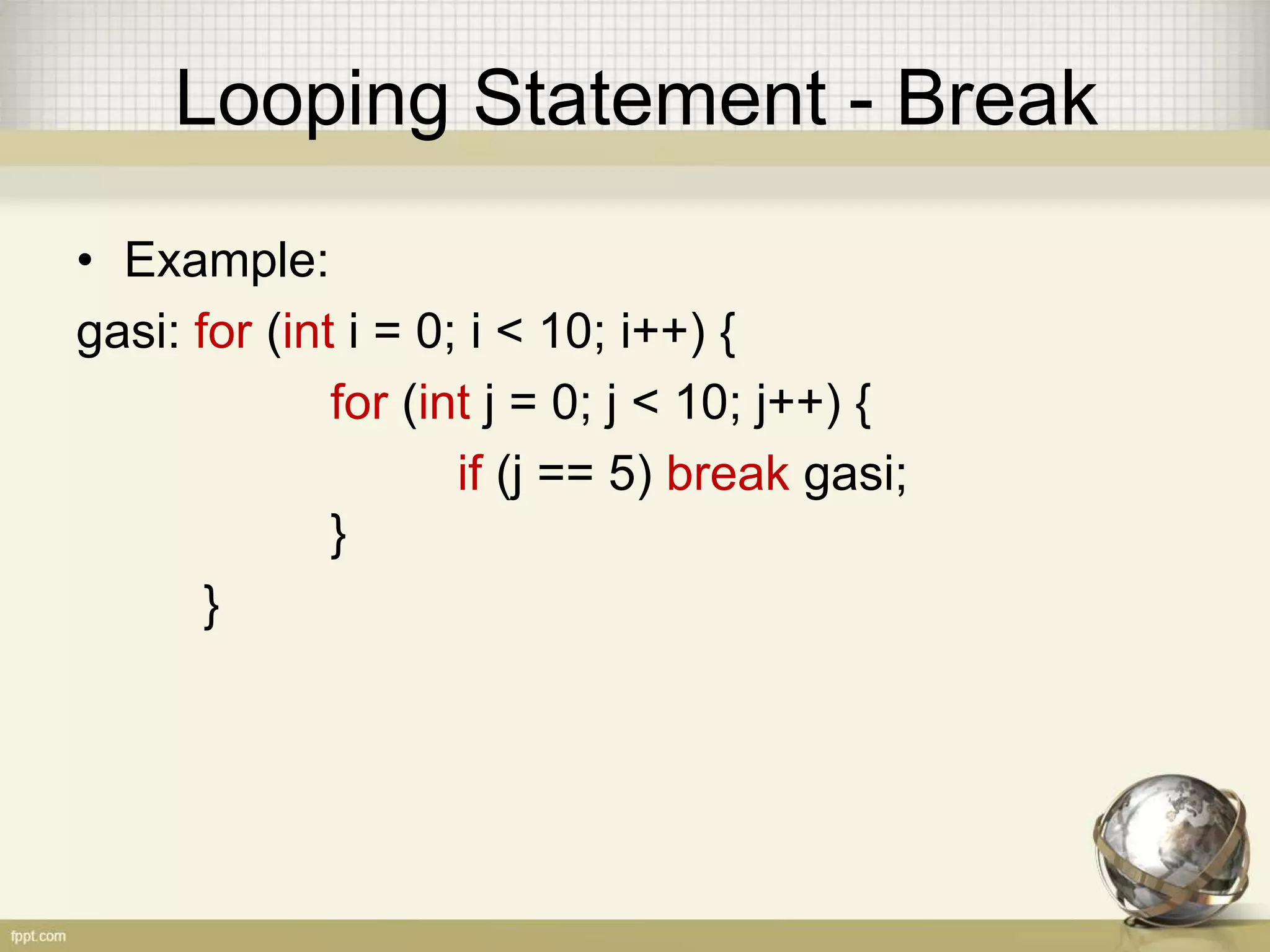
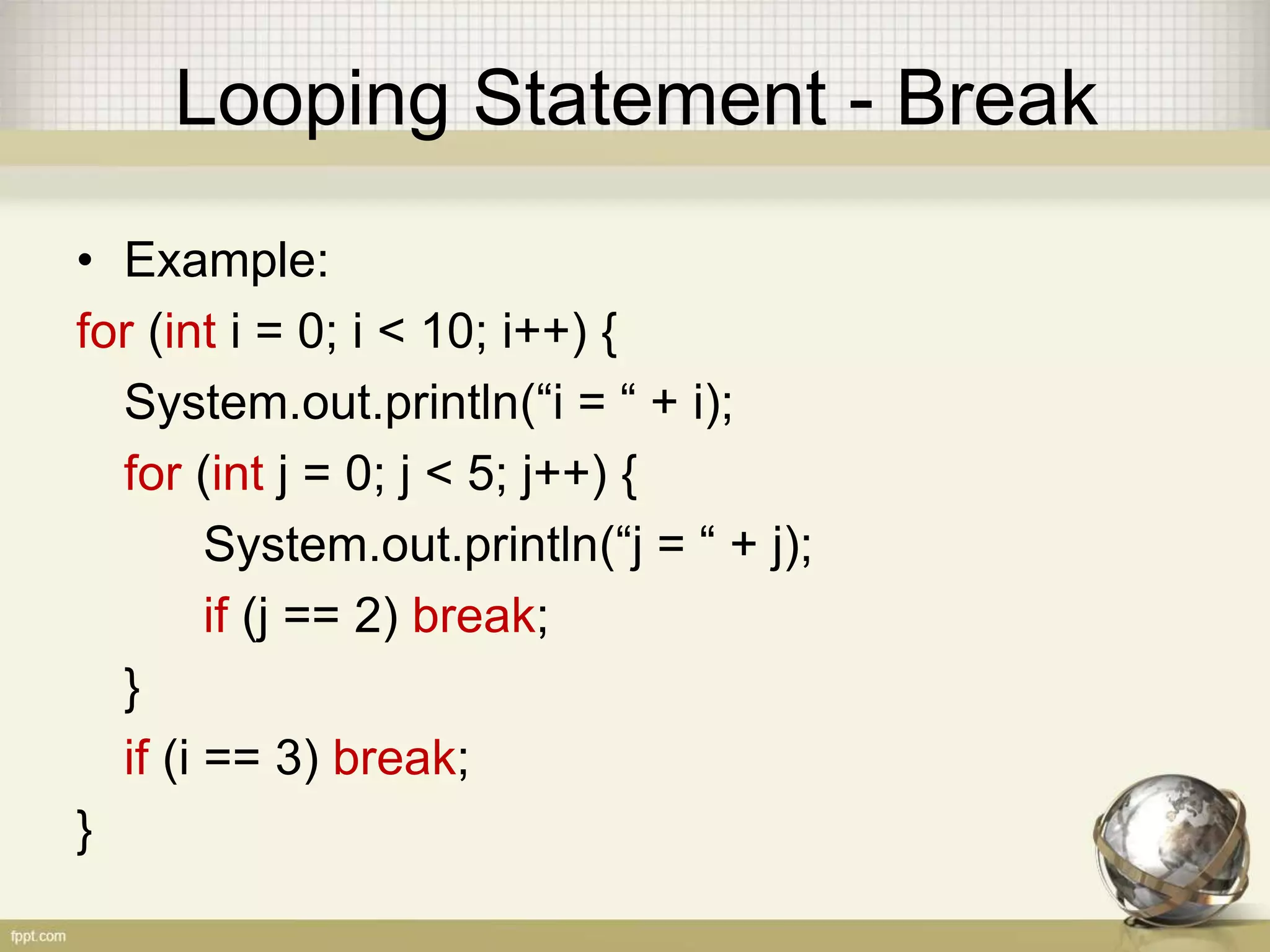
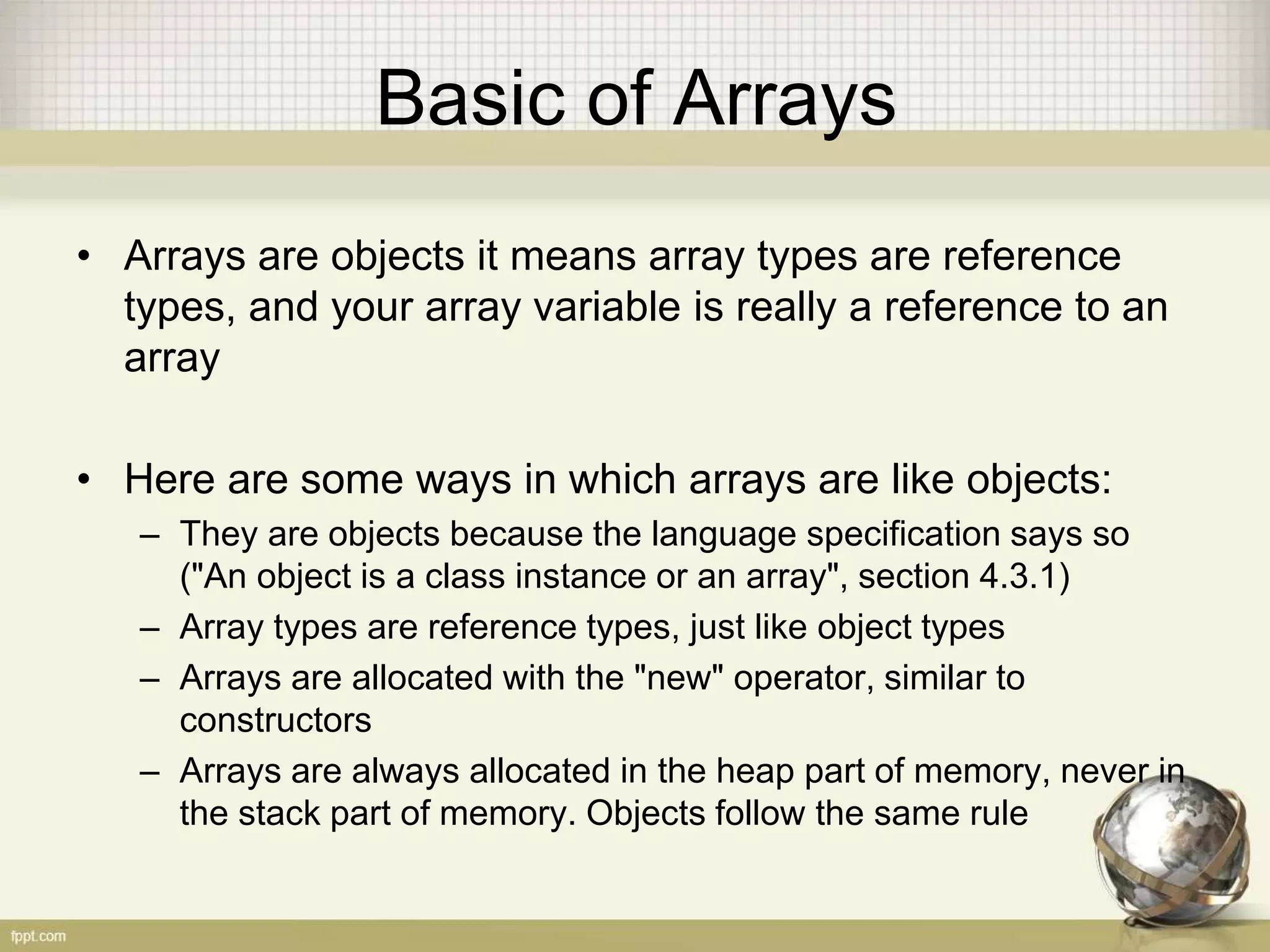

![Basic of Arrays • Declare an Arrays: // Recommended int[] data; int[] data1, data2, data3; // Not recommended int data[]; int data1[], data2[], data3[];](https://image.slidesharecdn.com/02javalanguageandooppartii-140610213230-phpapp02/75/02-Java-Language-And-OOP-PART-II-56-2048.jpg)
![Basic of Arrays • Initialize an Arrays: int[] data; data = new int[10]; // Valid data = new int[]; // Invalid int[] data = new int[10]; // Valid int[10] data = new int[10]; // Invalid int data[10] = new int[10]; // Invalid int data[10]; // Invalid](https://image.slidesharecdn.com/02javalanguageandooppartii-140610213230-phpapp02/75/02-Java-Language-And-OOP-PART-II-57-2048.jpg)
![Basic of Arrays • Fill an Arrays: int[] data = new int[5]; // Valid data[0] = 5; // OK data[1] = 6; data[2] = 7; data[3] = 8; data[4] = 9; // OK … so far data[5] = 10; // We have a problem here](https://image.slidesharecdn.com/02javalanguageandooppartii-140610213230-phpapp02/75/02-Java-Language-And-OOP-PART-II-58-2048.jpg)
![Basic of Arrays • Fill an Arrays: int[] data = {6, 7, 8, 9, 10}; // Valid int[] data = new int[] {6, 7, 8, 9, 10}; // Valid int[] data = new int[5] {6, 7, 8, 9, 10}; // Invalid int[] data = new int[5]; data = {6, 7, 8, 9, 10}; // Invalid](https://image.slidesharecdn.com/02javalanguageandooppartii-140610213230-phpapp02/75/02-Java-Language-And-OOP-PART-II-59-2048.jpg)
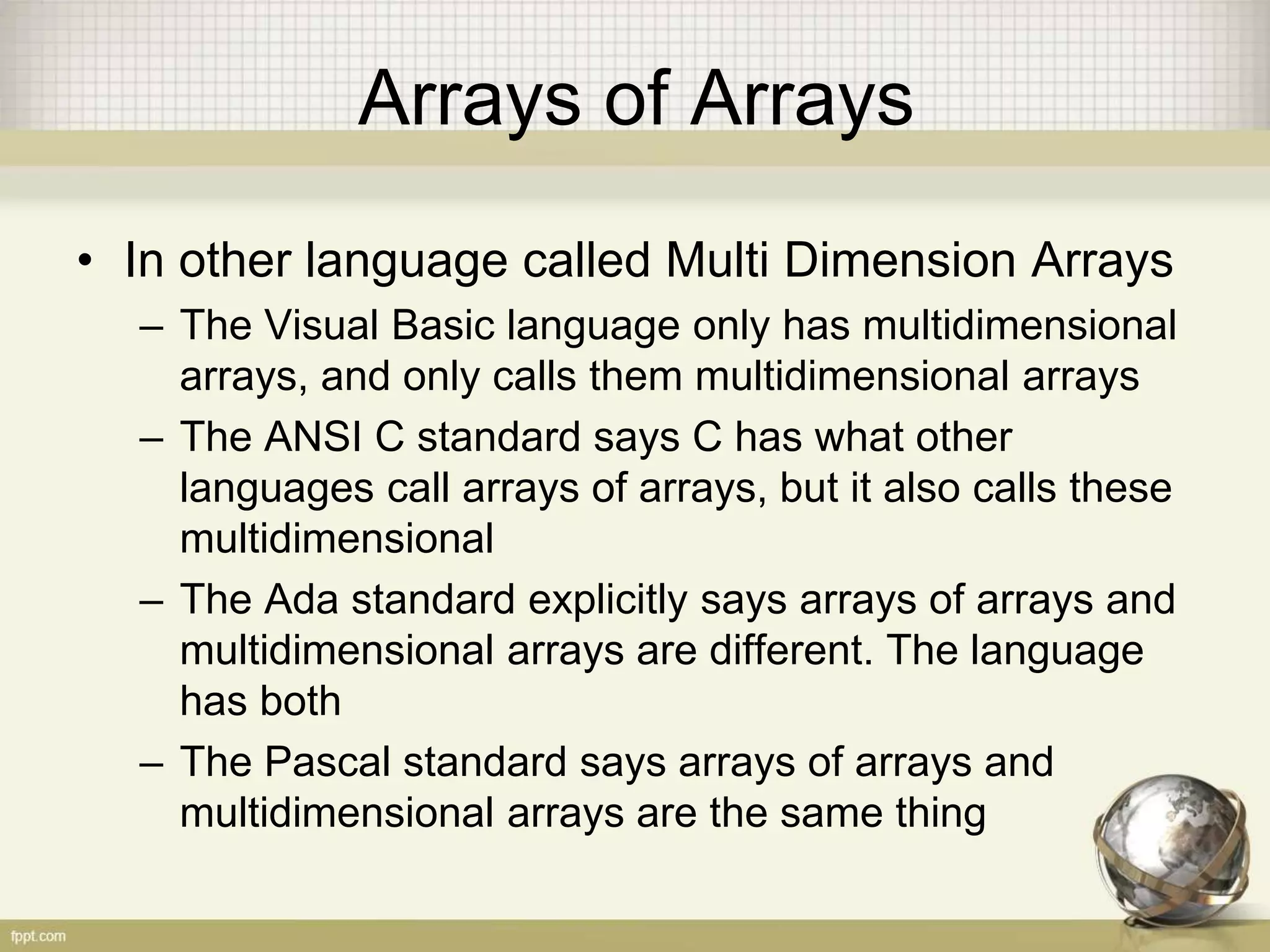
![Arrays of Arrays • Declare an Arrays: // Recommended int[][] data; int[][] data1, data2, data3; // Not recommended int data[][]; int data1[][], data2[][], data3[][];](https://image.slidesharecdn.com/02javalanguageandooppartii-140610213230-phpapp02/75/02-Java-Language-And-OOP-PART-II-61-2048.jpg)
![Arrays of Arrays • Initialize an Arrays: int[][] data; data = new int[10][10]; // Valid data = new int[10][]; // Invalid int[][] data = new int[10][10]; // Valid int[10][10] data = new int[10][10]; // Invalid int data[10][10] = new int[10][10]; // Invalid int data[10][10]; // Invalid](https://image.slidesharecdn.com/02javalanguageandooppartii-140610213230-phpapp02/75/02-Java-Language-And-OOP-PART-II-62-2048.jpg)
![Arrays of Arrays • Fill an Arrays: int[][] data = new int[3][3]; data[0][0] = 0; data[0][1] = 1; data[0][2] = 2; data[1][0] = 0; data[1][1] = 1; data[1][2] = 2; data[2][0] = 0; data[2][1] = 1; data[2][2] = 2;](https://image.slidesharecdn.com/02javalanguageandooppartii-140610213230-phpapp02/75/02-Java-Language-And-OOP-PART-II-63-2048.jpg)
![Arrays of Arrays • Fill an Arrays: int[][] data = new int[3][]; data[0] = new int[1]; data[0][0] = 0; data[1] = new int[2]; data[1][0] = 0; data[1][1] = 1; data[2] = new int[3]; data[2][0] = 0; data[2][1] = 1; data[2][2] = 2;](https://image.slidesharecdn.com/02javalanguageandooppartii-140610213230-phpapp02/75/02-Java-Language-And-OOP-PART-II-64-2048.jpg)
![Arrays of Arrays • Fill an Arrays: int[][] data = {{0, 1}, {0, 1, 2}, {0, 1, 2, 3}};// Valid int[][] data = new int[][] {{0, 1}, {0, 1}}; // Valid int[][] data = new int[1][2] {{0, 1}}; // Invalid int[][] data = new int[2][2]; data = {{0, 1}, {1, 2}, {2, 3}}; // Invalid](https://image.slidesharecdn.com/02javalanguageandooppartii-140610213230-phpapp02/75/02-Java-Language-And-OOP-PART-II-65-2048.jpg)
